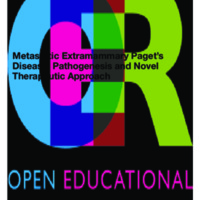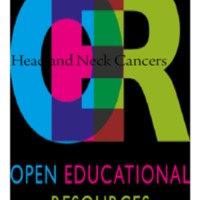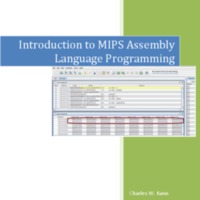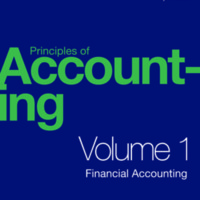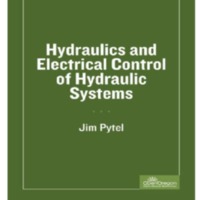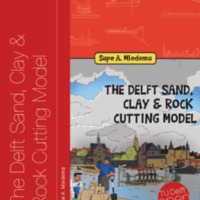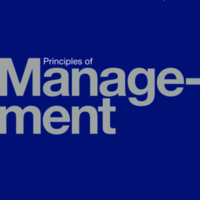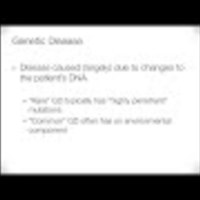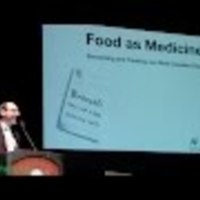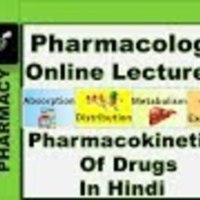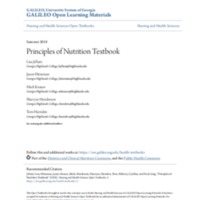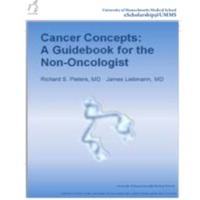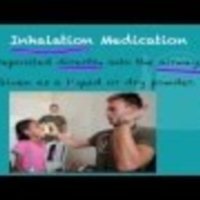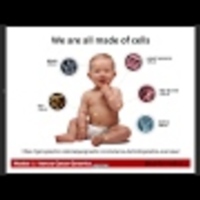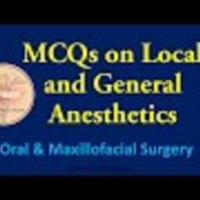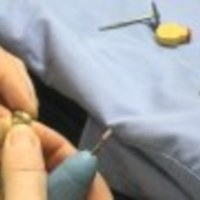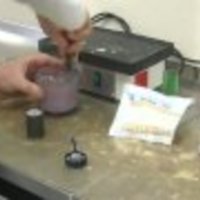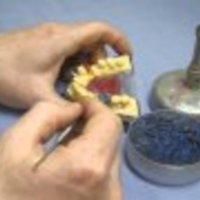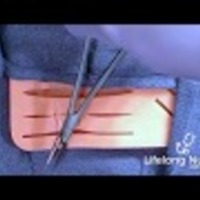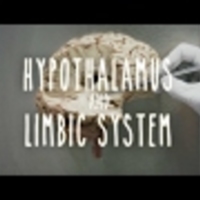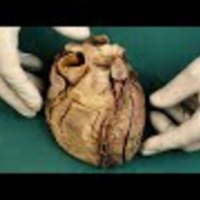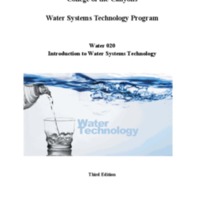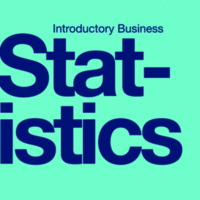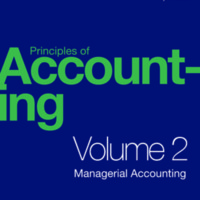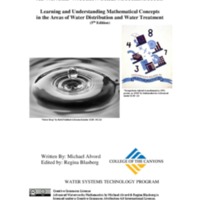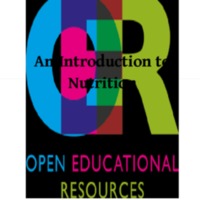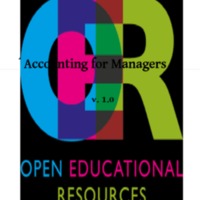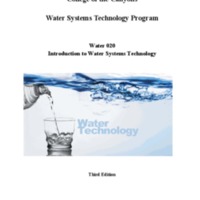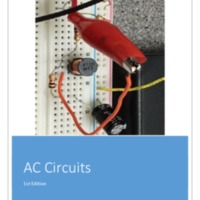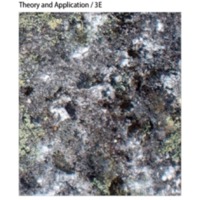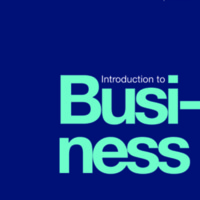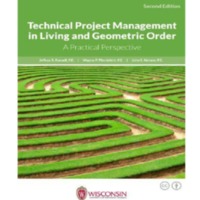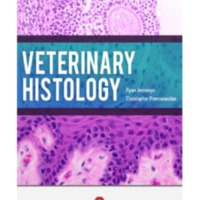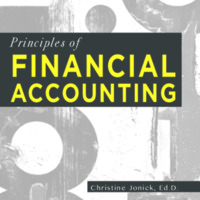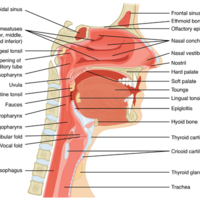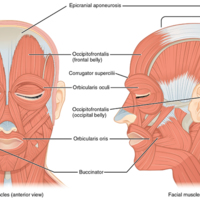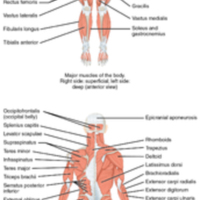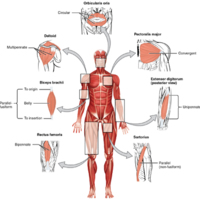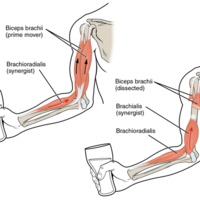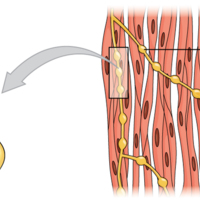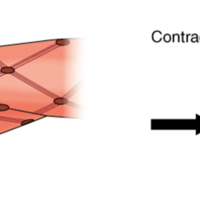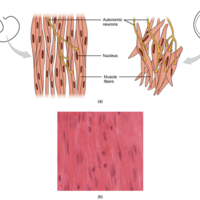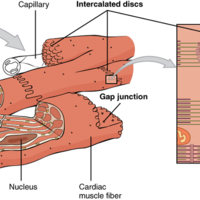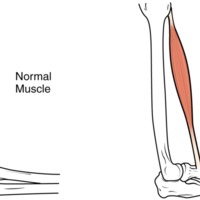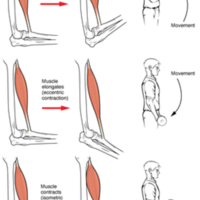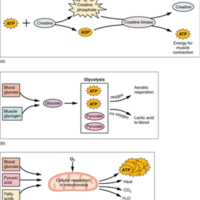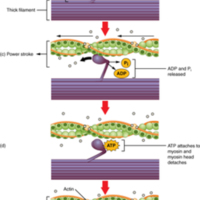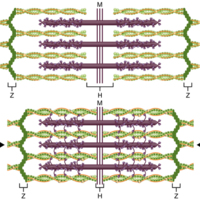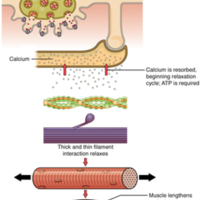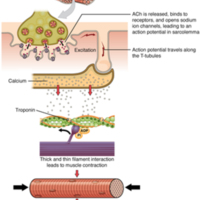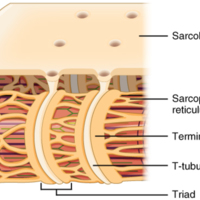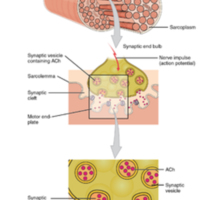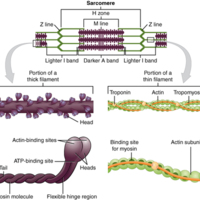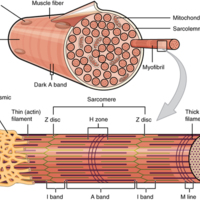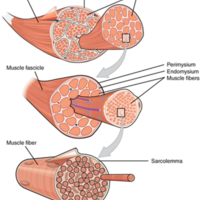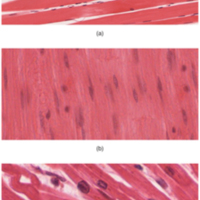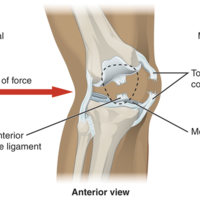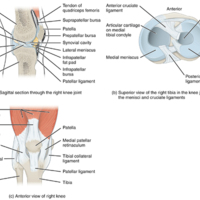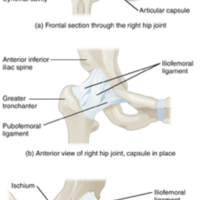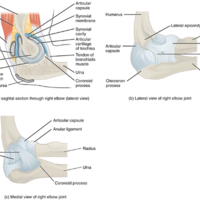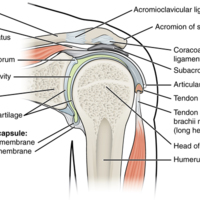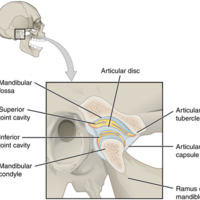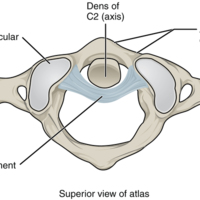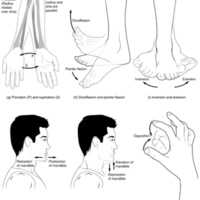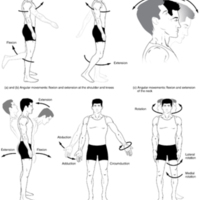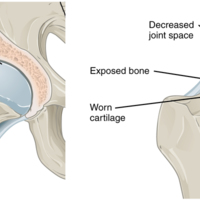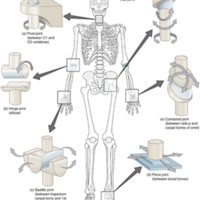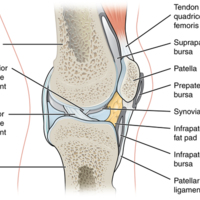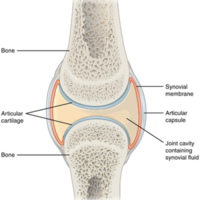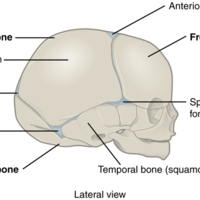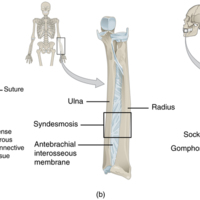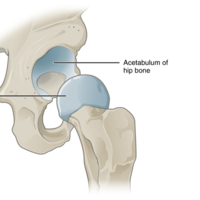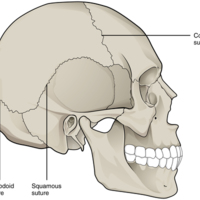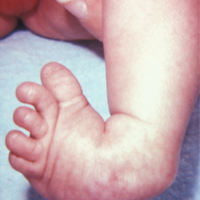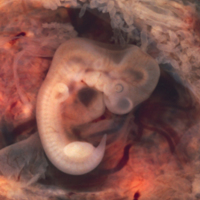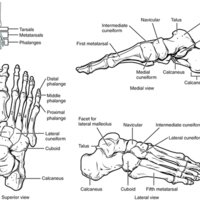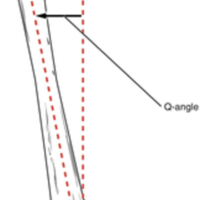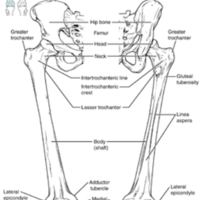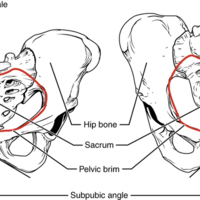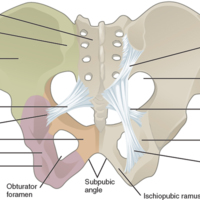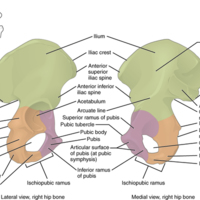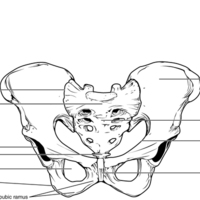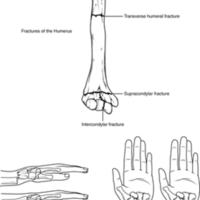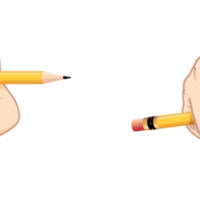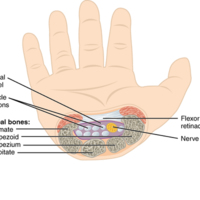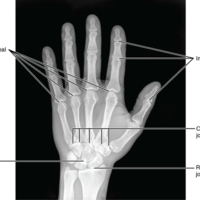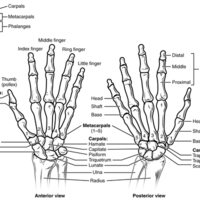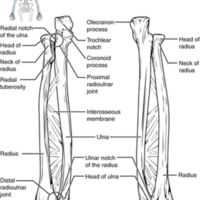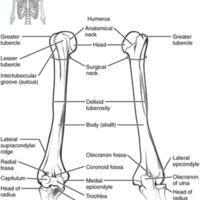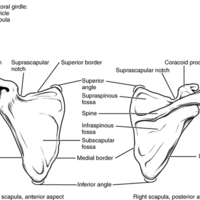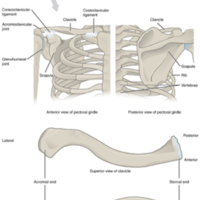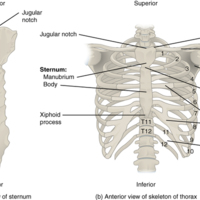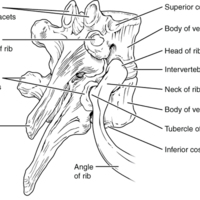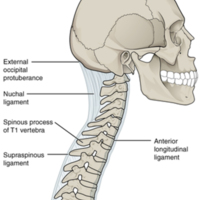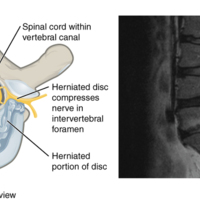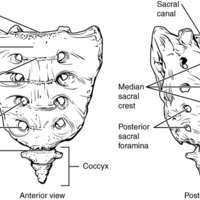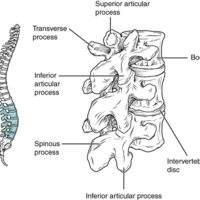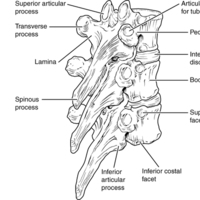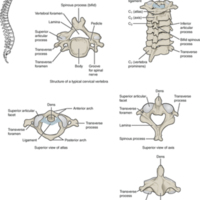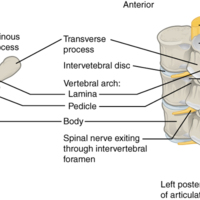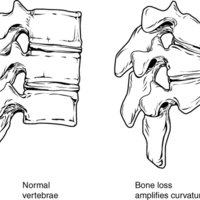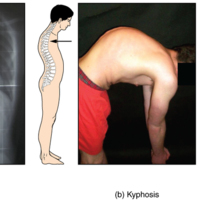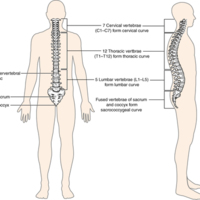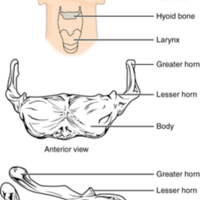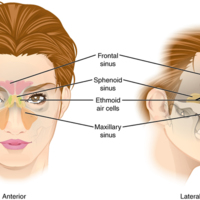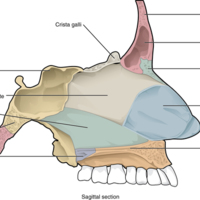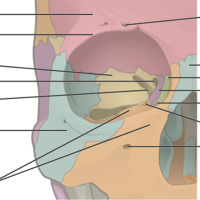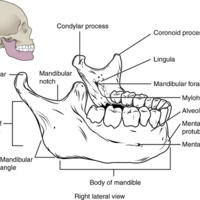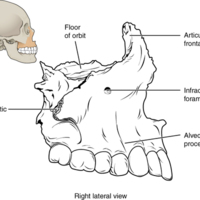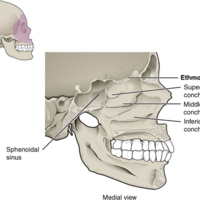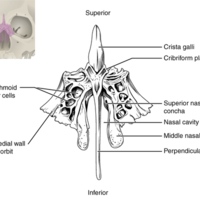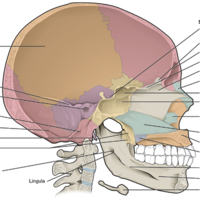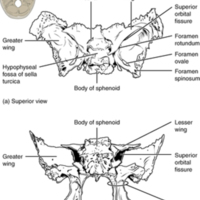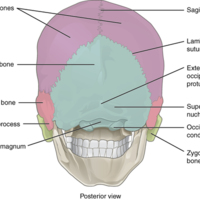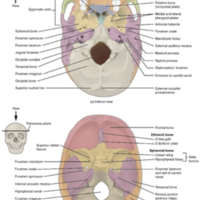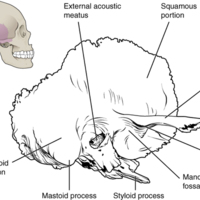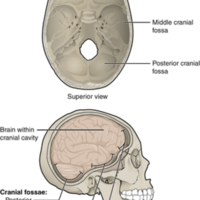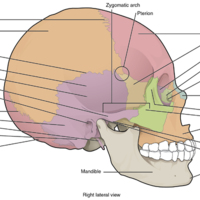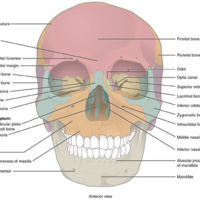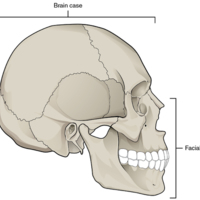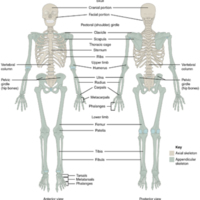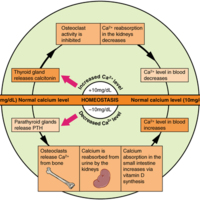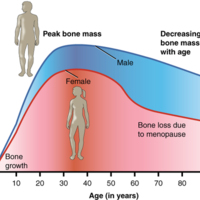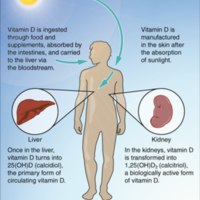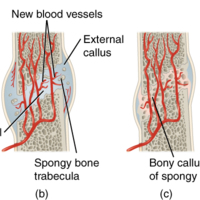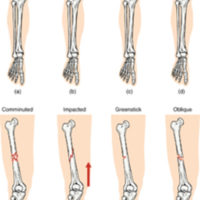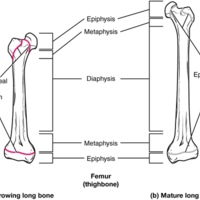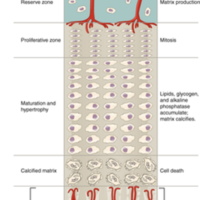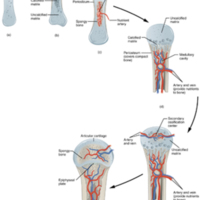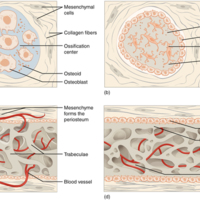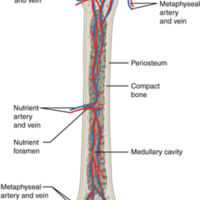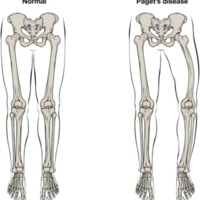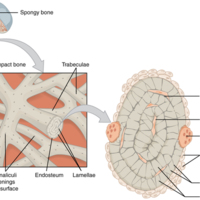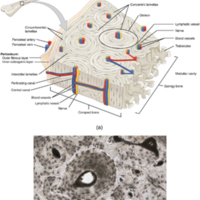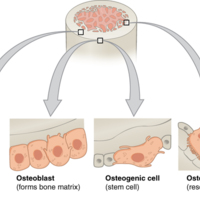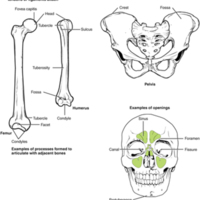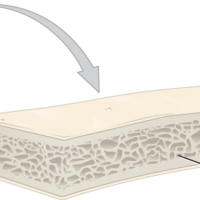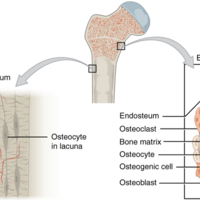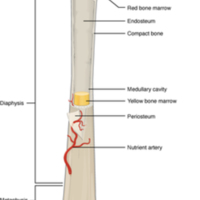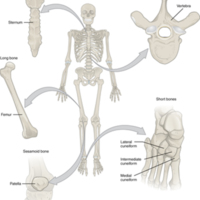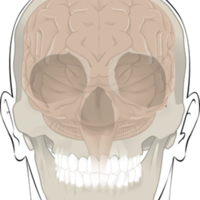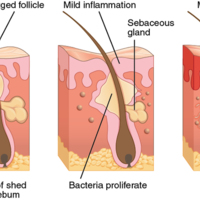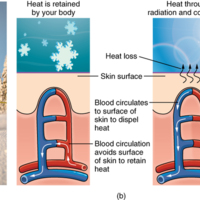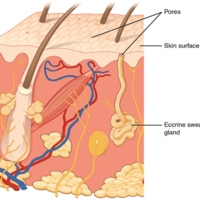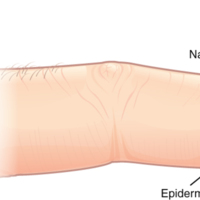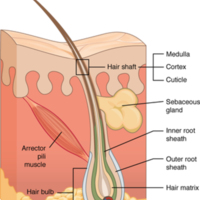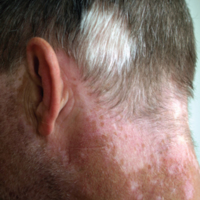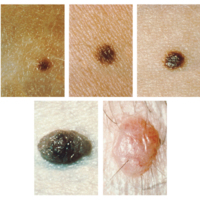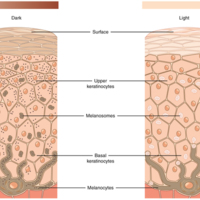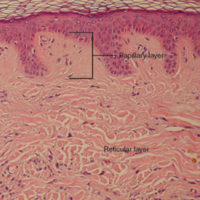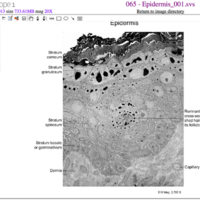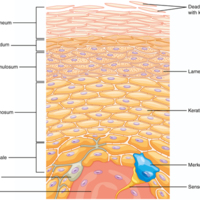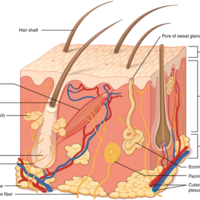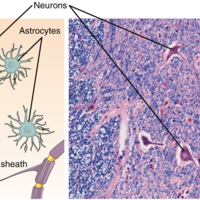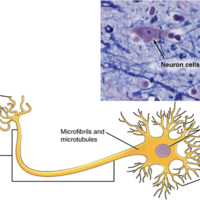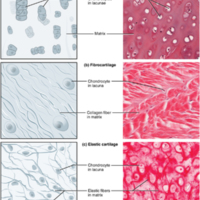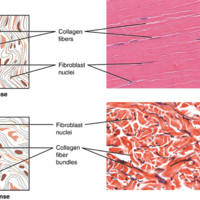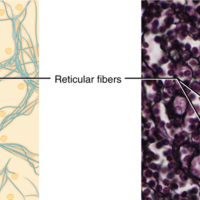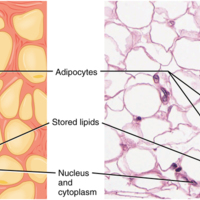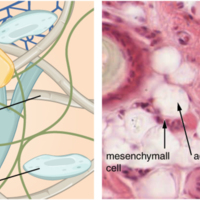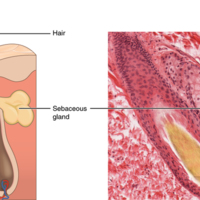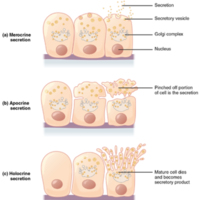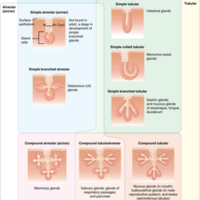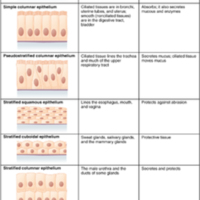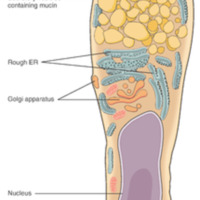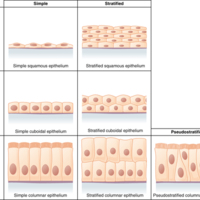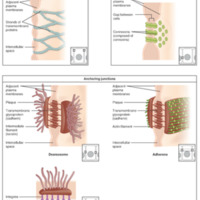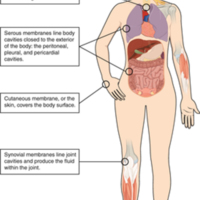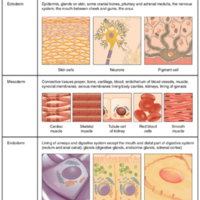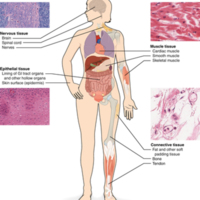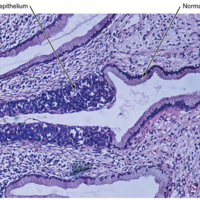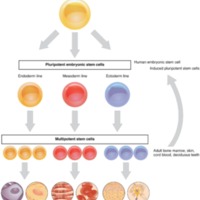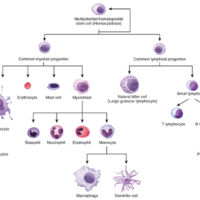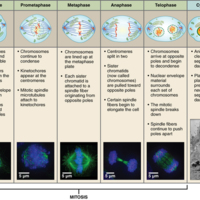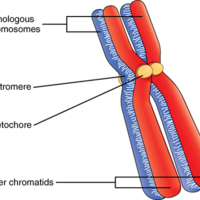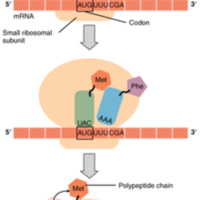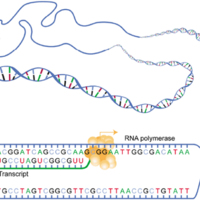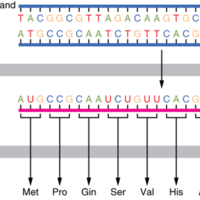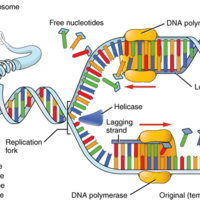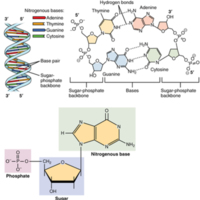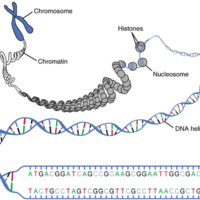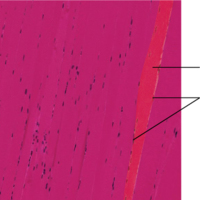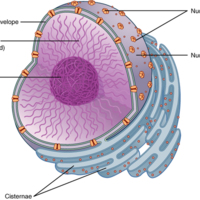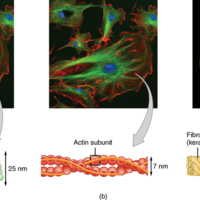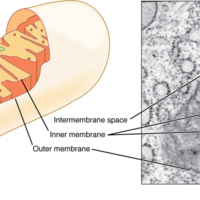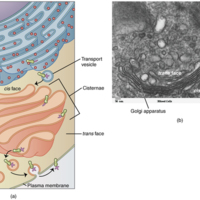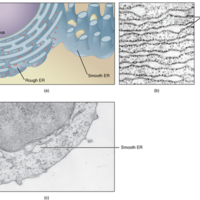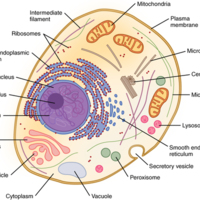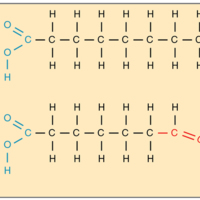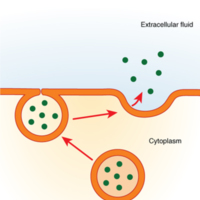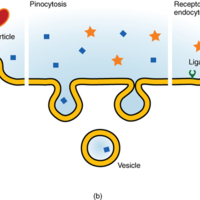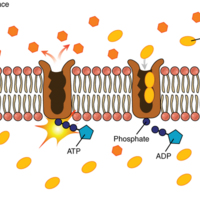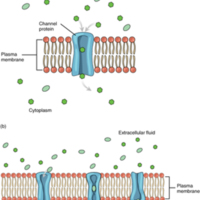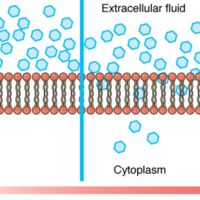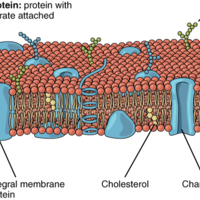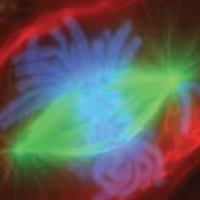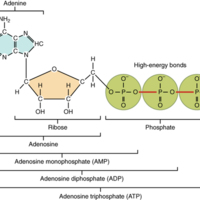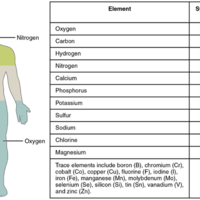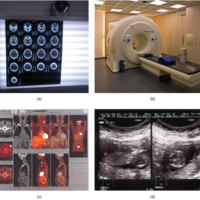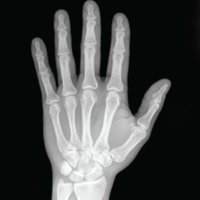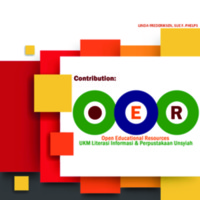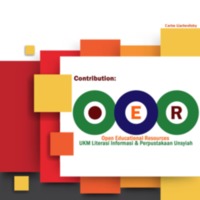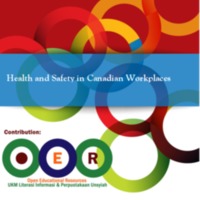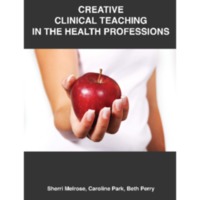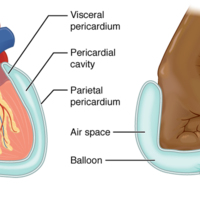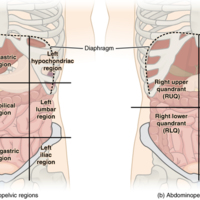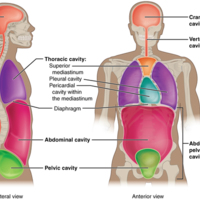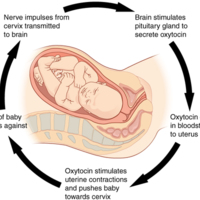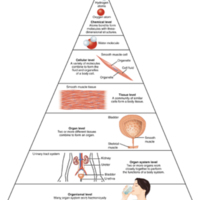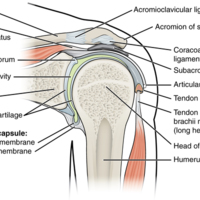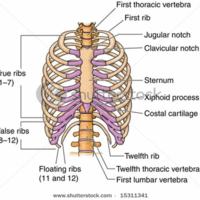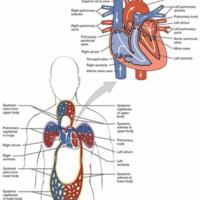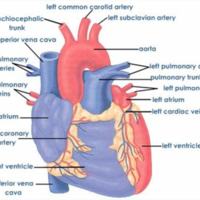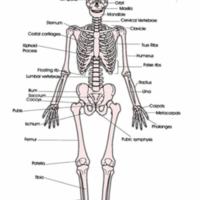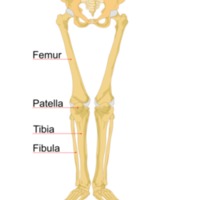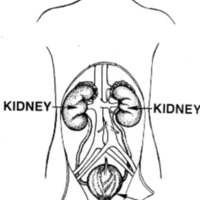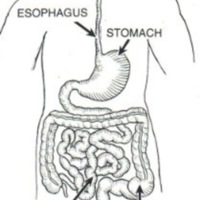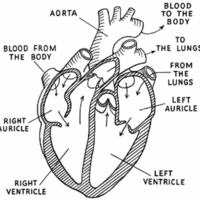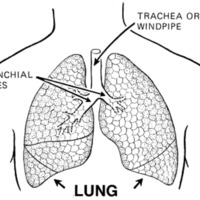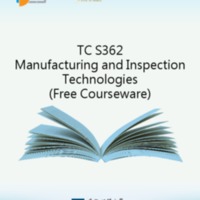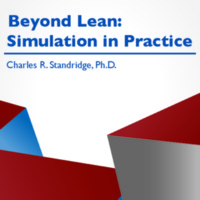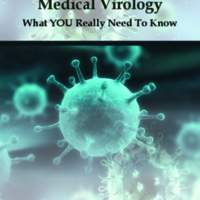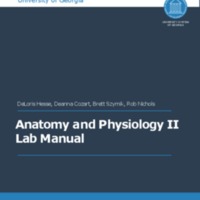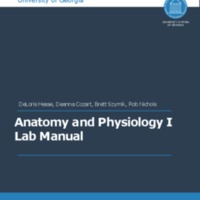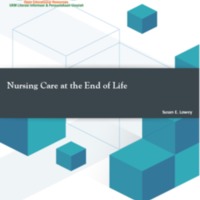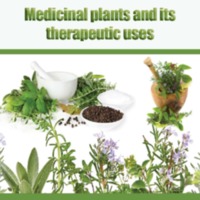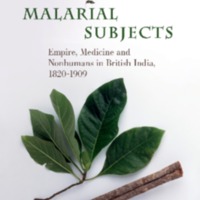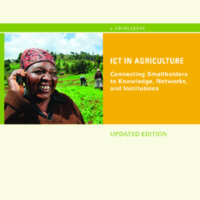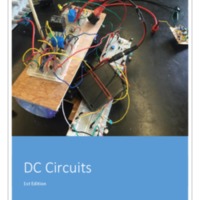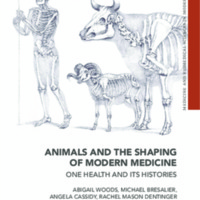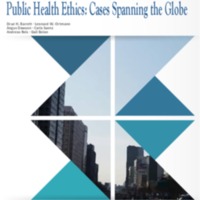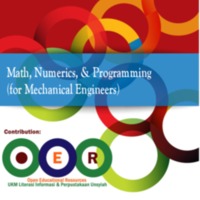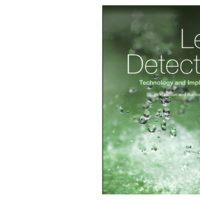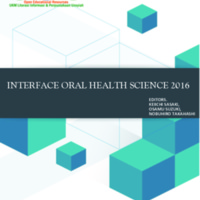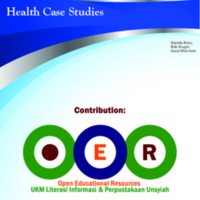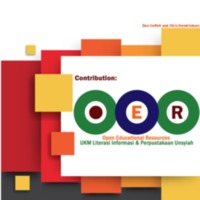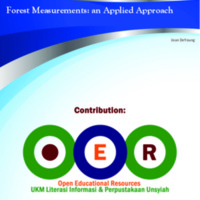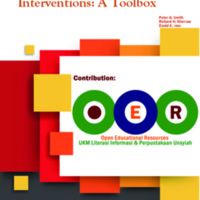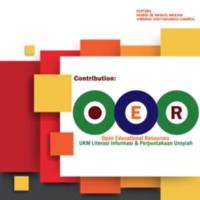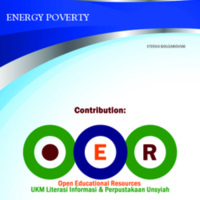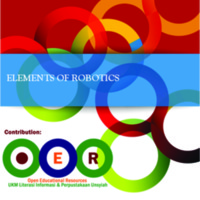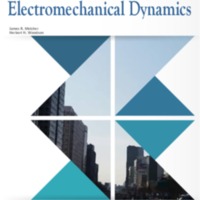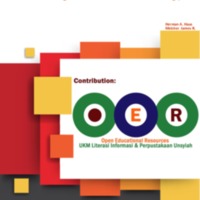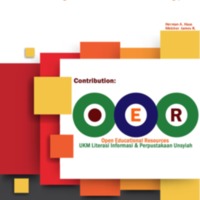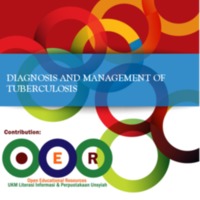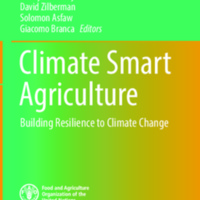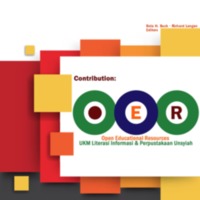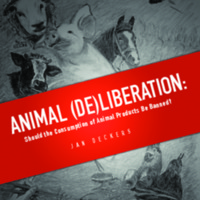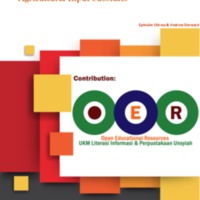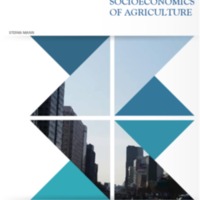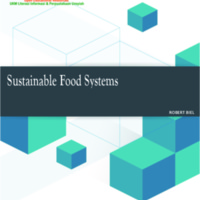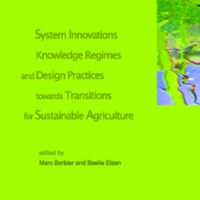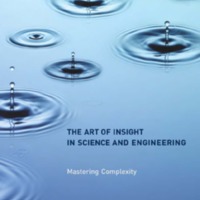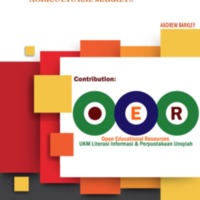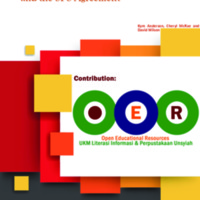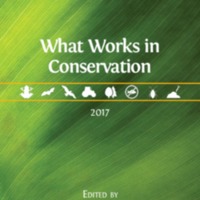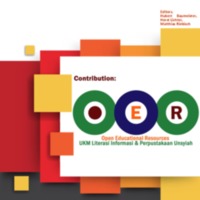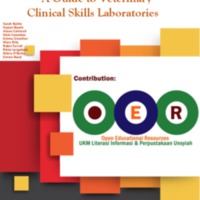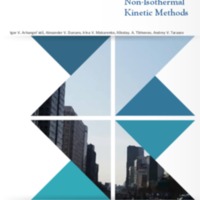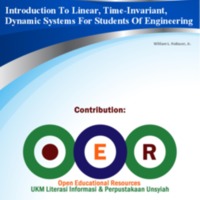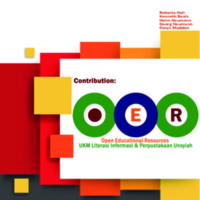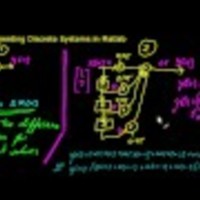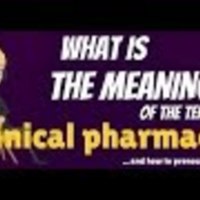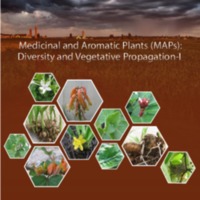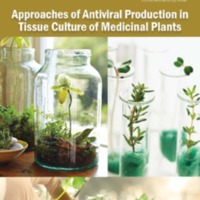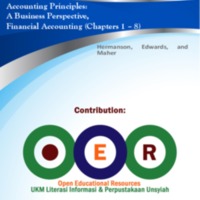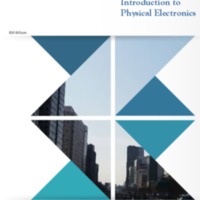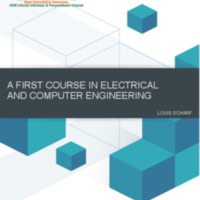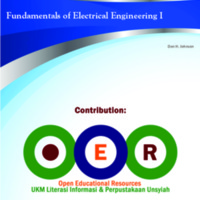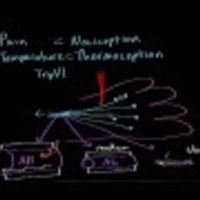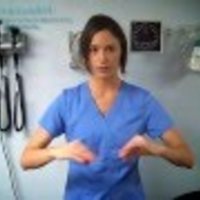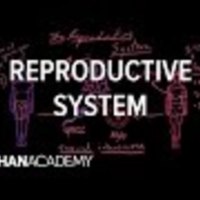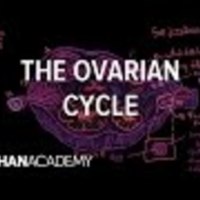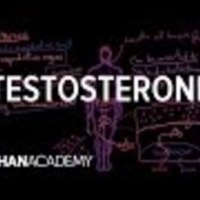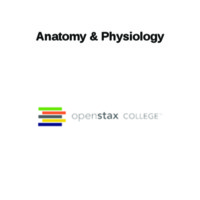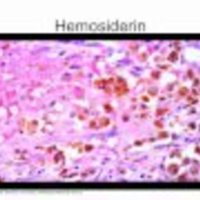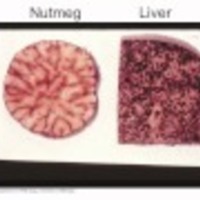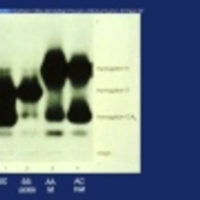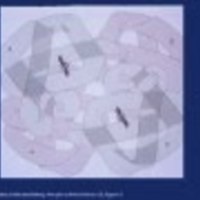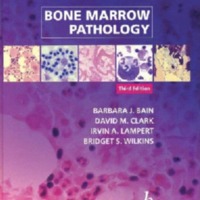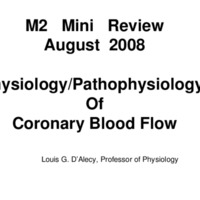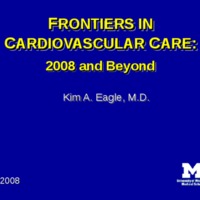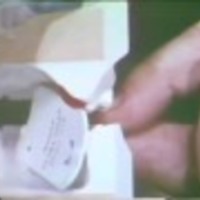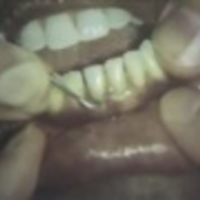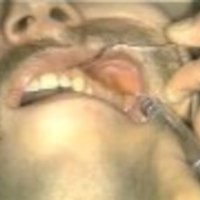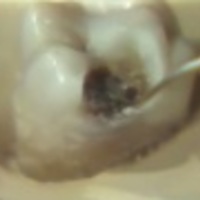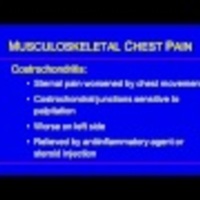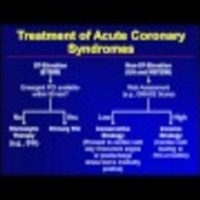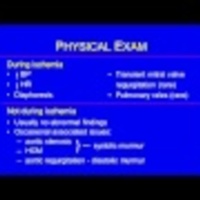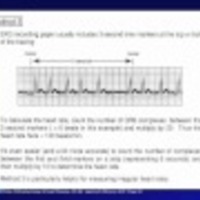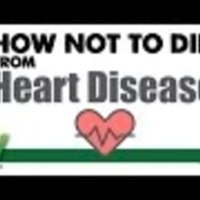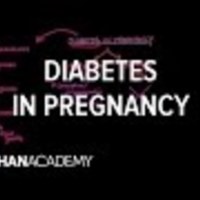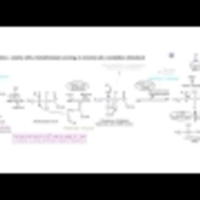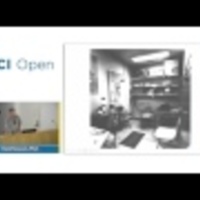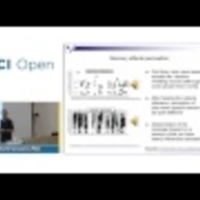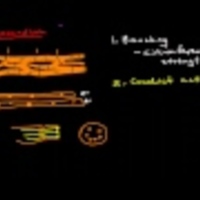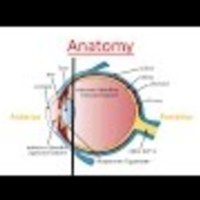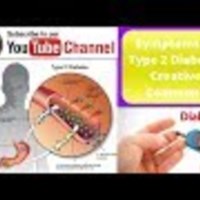600 Technology
Dublin Core
Title
600 Technology
Subject
Technology
Description
Technology
Items in the 600 Technology Collection
Clinical Procedures for Safer Patient Care
This peer reviewed e-book is a must-read for nurses and other health professionals who strive to teach with creativity and excellence in clinical settings. Each chapter presents current evidence informed educational practice knowledge. Each topic is…
Metastatic Extramammary Paget's Disease: Pathogenesis and Novel Therapeutic Approach
Extramammary Paget's disease (EMPD) is a rare, slow-growing, cutaneous adenocarcinoma that usually originates in the anogenital area and axillae outside the mammary glands. EMPD mostly progresses slowly and is often diagnosed as carcinoma in situ;…
Head and Neck Cancers
1. A variety of different malignancies fall into the category of “Head and. Neck Cancers”. This chapter focuses on upper aerodigestive tract cancer.
2. Tobacco and alcohol use and human papillomavirus infection are
common causes of head and…
2. Tobacco and alcohol use and human papillomavirus infection are
common causes of head and…
Introduction To MIPS Assembly Language Programming
This book was written to introduce students to assembly language programming in MIPS. As with all assembly
language programming texts, it covers basic operators and instructions, subprogram calling, loading and
storing memory, program control, and…
language programming texts, it covers basic operators and instructions, subprogram calling, loading and
storing memory, program control, and…
Business Plan Development Guide
This textbook and its accompanying spreadsheet templates were designed with and for students wanting a practical and easy-to-follow guide for developing a business plan. It follows a unique format that both explains what to do and demonstrates how to…
Digital Circuit Projects: An Overview of Digital Circuits Through Implementing Integrated Circuits - Second Edition
Digital circuits, often called Integrated Circuits or ICs, are the central building blocks of a Central Processing Unit (CPU). To understand how a computer works, it is essential to understand the digital circuits which make up the CPU. This text…
Building information - representationand management
This book is about the foundations and principles of building information, its representation and management. It does not tell you which software or policies to choose for representing buildings and managing the resulting information. In fact, the…
Principles of Accounting Volume 1 Financial Accounting
Principles of Accounting is designed to meet the scope and sequence requirements of a two-semester accounting course that covers the fundamentals of financial and managerial accounting. Due to the comprehensive nature of the material, we are offering…
HYDRAULICS AND ELECTRICAL CONTROL OF HYDRAULIC SYSTEMS
Differentiate between fluid power systems and mechanical or electrical systems Differentiate between hydraulic and pneumatic systems with respect to the fluid medium employed, characteristics, capacity, performance, and cleanliness
Describe a basic…
Describe a basic…
The Delft Sand, Clay & Rock Cutting Model
This book gives an overview of cutting theories for the cutting of sand, clay and rock as applied in dredging engineering. In dredging engineering in general sand, clay and rock are excavated with buckets of bucket ladder dredges,…
Principles of Management
Principles of Management is designed to meet the scope and sequence requirements of the introductory course on management. This is a traditional approach to management using the leading, planning, organizing, and controlling approach. Management is a…
Mastering Strategic Management
Teaching the strategic management course can be a challenge for many professors. In most business schools, strategic management is a “capstone” course that requires students to draw on insights from various functional courses they have completed…
Professional Web Accessibility Auditing Made Easy
Digital accessibility skills are in high demand, as the world becomes more aware of barriers in digital content that prevent some people from participating in a digital society. These are essential skills for web developers, and essential knowledge…
Introduction to Financial Accounting Adapted for U.S. GAAP
AccounƟng involves a process of collecƟng, recording, and reporƟng a business’s economic acƟviƟes to users. It is oŌen called the language of business because it uses a unique vocabulary
to communicate informaƟon to decision makers. To…
to communicate informaƟon to decision makers. To…
Introduction to Genetic Disorders
This is the first lecture in the Bioinformatics of Genomic Medicine 2017 workshop hosted by the Canadian Bioinformatics Workshops. This lecture is by Michael Brudno from the Hospital for Sick Children.
For tutorials and lecture slides for this…
For tutorials and lecture slides for this…
Food as Medicine: Preventing and Treating the Most Common Diseases with Diet
This is Dr. Greger's 2015 live presentation. Dr. Greger has scoured the world's scholarly literature on clinical nutrition and developed this new presentation based on the latest in cutting-edge research exploring the role diet may play in…
Pharmacokinetics/ADME Of Drugs | Pharmacology Online Lecture-1 | For Upcoming D.Pharm & B.Pharm Exam
In this video , we have discussed about PHARMACOKINETICS OF DRUGS - ABSORPTION, DISTRIBUTION, METABOLISM, EXCRETION (ADME) IN BRIEF. Watch the video till the end to get complete information regarding pharmacokinetics of drugs.
Topic discussed in the…
Topic discussed in the…
Principles of Nutrition Textbook
As we get started on our journey into the world of health and nutrition, our first focus will be to
demonstrate that nutritional science is an evolving field of study, continually being updated and
supported by research, studies, and trials.
demonstrate that nutritional science is an evolving field of study, continually being updated and
supported by research, studies, and trials.
Cancer of the Esophagus
This chapter in Cancer Concepts: A Guidebook for the Non-Oncologist presents an overview of esophageal cancer, including etiology, epidemiology, screening, pathology, staging, and treatment.
Coming Off Psychiatric Drugs: A Harm Reduction Approach to Medication Withdrawal | Will Hall
Psychiatric medications can sometimes be very useful, but there is often little information or guidance when the risks and harm start to outweigh the benefits. Will Hall provides an introductory overview of how to come off psychiatric medication.…
Drug Formulations
This is a tutorial/lecture on Drug Formulations. We cover some topics important for classes such as Biochemistry and Pharmacology.
Breast Cancer Eliminated Using Keshe Technologies - Demo by Dr.Rodrigo Vildosola
Dr. Rodrigo Vildosola explains his method for treating breast cancer using Keshe Plasma Technologies. He gives an example of how he used this with one of his patients with stunning results.
Warning: The video contains graphic images of a medical…
Warning: The video contains graphic images of a medical…
Introduction to Cancer Genomics
This is the first lecture in the Bioinformatics for Cancer Genomics 2017 workshop hosted by the Canadian Bioinformatics Workshops. This lecture is by Trevor Pugh from the Princess Margaret Cancer Centre.
For tutorials and lecture slides for this…
For tutorials and lecture slides for this…
MCQs in Oral and Maxillofacial Surgery - Local and General Anesthetics
Oral and Maxillofacial Surgery MCQs - Local and General Anesthetics
Practice these MCQs for MDS entrance preparation in AIIMS, COMEDK, AIPG, PGI, BHU, etc. Also useful for ADA, NBDE, NDEB and other dental board exams. Please Share and Subscribe to…
Practice these MCQs for MDS entrance preparation in AIIMS, COMEDK, AIPG, PGI, BHU, etc. Also useful for ADA, NBDE, NDEB and other dental board exams. Please Share and Subscribe to…
Restoring a tooth (Gold Crown) - Part 3
This video shows the final stage of the production of a cast gold crown for a damaged tooth. The gold casting is cooled and removed from the mould. Sand blasting, an acid bath and then a series of abrasive burs are used to trim and finish the casting…
Restoring a tooth (Gold Crown) - Part 2
This video shows the second stage of the production of a cast gold crown for a damaged tooth. The wax template of the tooth is sprued using wax wire, then invested in a refractory investment material. The video shows the mould being heated to both…
Restoring a tooth (Gold Crown) - Part 1
This video shows the first stage of the production of a cast gold crown for a damaged tooth. The crown is made on the model (See Videos 2 and 3) using wax, which will be replaced by molten gold in the lost wax casting process. The technique of making…
Basic Suturing: How to Suture
In this video, I demonstrate the surgeon's knot and the square knot and give some general beginner tips on how to suture.
Middle Mediastinum and Heart - Anatomy and Dissection Guide
The anatomy shown in this video is based off of the UBC MEDD 411 gross anatomy checklist.
Foundations for Assisting in Home Care
Home health services are those which are provided within the comforts of the home setting to help people avoid hospitalization or skilled nursing facility placement while they recover from illness, injury, or disability. Home health care may also be…
Urogynaecology Textbook
The field of Urogynaecology has expanded dramatically over the past decade with the advent of a number of new medical and surgical treatment modalities. The evidence base on pelvic floor dysfunction has also grown extensively. This multi-contributor…
Water Systems Technology Program
Water Systems and Technology is a program designed to provide the student with enough information to build a successful and lasting career in the water and wastewater industry. It is a by professionals within the industry and within academia. Upon…
Water Distribution Operator II
Pipeline projects can be small jobs requiring only a few sticks of pipe. Or, they can be extensive jobs covering several miles or more. Regardless of the size of the job, it is important to properly plan. Preparing the pipe at the job site is an…
Business Information Systems: Design an App for That
nformation systems are the combination of people, information technology, and business processes to
accomplish a business objective. Every information system (IS) has people, processes, and information technology. In fact, many IS professionals add…
accomplish a business objective. Every information system (IS) has people, processes, and information technology. In fact, many IS professionals add…
An Introduction to Ontology Engineering
This first general textbook An introduction to ontology engineering has as main aim to provide the reader with a comprehensive introductory overview of ontology engineering. A secondary aim is to provide hands-on experience in ontology development…
Introductory Business Statistics
You are probably asking yourself the question, "When and where will I use statistics?" If you read any newspaper, watch television, or use the Internet, you will see statistical information. There are statistics about crime, sports, education,…
Principles of Accounting, Volume 2: Managerial Accounting
Principles of Accounting is designed to meet the scope and sequence requirements of a two-semester
accounting course that covers the fundamentals of financial and managerial accounting. This book is
specifically designed to appeal to both…
accounting course that covers the fundamentals of financial and managerial accounting. This book is
specifically designed to appeal to both…
Water Supply and Demand in California
You’re about to understand water demand and water supply more deeply. This understanding is going to change how you look at your water bill, grass in your yard and around town, and all those canals you see while driving around in…
ADVANCED WATERWORKS MATHEMATICS
The converting (or cancelling) of units is the most important concept in waterworks mathematics. You may be working with million gallons, cubic feet, acre feet, feet per second, gallons per minute, milligrams per liter, pounds per gallon, yard,…
Kansas State University Human Nutrition Flexbook
The CK-12 foundation defines a flexbook as a “free and open source textbook platform where
one can build and edit collaborative textbooks1
.” The FNDH 400 (formerly HN 400, department
changed its name from Human Nutrition to Food, Nutrition,…
one can build and edit collaborative textbooks1
.” The FNDH 400 (formerly HN 400, department
changed its name from Human Nutrition to Food, Nutrition,…
An Introduction to Sustainable Business
Going green, green business, and sustainable business are topics on everyone’s mind. But what does all this mean exactly? A Primer on Sustainable Business answers that question and provides an introduction to the basics you need to know. We begin…
An Introduction to Nutrition
As we get started on our journey into the world of health and nutrition, our first focus will be to demonstrate that nutritional science is an evolving field of study, continually being updated and supported by research, studies, and trials. Once…
Accounting for Managers
Answer: Financial accounting1 focuses on providing historical financial information to external users. External users are those outside the company,
including owners (e.g., shareholders) and creditors (e.g., banks or bondholders). Financial…
including owners (e.g., shareholders) and creditors (e.g., banks or bondholders). Financial…
Wastewater Treatment & Disposal II
The wastewater collection system is the network of pipes that convey the wastewater from households and business to a wastewater treatment facility. Each customer will have a lateral connected to the main sewer lines. In order to keep sediment from…
Wastewater Treatment &Disposal I
Proper wastewater treatment and disposal is essential for the vitality of a functioning society. Without it, a community’s environment can be severely polluted and the health of the public is at great risk. To better understand the relationship…
Water Treatment and Plant Operation Processes II
The basic objective in the operation of drinking water treatment plants is to produce a drinking water that is safe and aesthetically pleasing at a reasonable cost with respect to capital as well as operation and maintenance.
From a public health…
From a public health…
Water Treatment Plant Operation Processes I
A very finite amount of water on our planet (0.34%) is available to treat for human consumption. Knowing where the water comes from assists certified operators in treating raw source water to make it potable. Newer technology has been developed to…
Water Distribution Operator I
A water distribution system is nothing more than a network of components designed to deliver water from a source to a user. It can be thought of as an array of piping networks and various pieces of equipment taking water from one location and…
WATE R Q UAL ITY
This chapter presents a brief introduction on the water sources that are available for potable supply; detailed information is presented in Water 032 (Water Supply). Understanding the water sources used for potable application is important to…
Introduction to Water Systems Technology
Water Systems and Technology is a program designed to provide the student with enough information to build a successful and lasting career in the water and wastewater industry. It is a program that has been developed by professionals within the…
Business 211 Introduction to Business Law
Lawhas different meanings as well as differentfunctions. Philosophers have considered issues of justice and law for centuries, and several different approaches,
or schools of legal thought, have emerged. In this chapter, we will look at those…
or schools of legal thought, have emerged. In this chapter, we will look at those…
AC Circuits
This eBook was written as the sequel to the eBook titled DC Circuits, which was written in 2016 by Chad Davis. This eBook covers Alternating Current (AC) circuit theory as well as a brief introduction of electronics. It is broken up into seven…
A Primer on Sustainable Business
As you read A Primer on Sustainable Business, we challenge you to not think of sustainability as a program, an initiative, or an activity. Rather, sustainability is a mind-set, a philosophy, and worldview. Throughout each chapter, you are challenged…
Semiconductor Devices: Theory and Application
Just as the late eighteenth through nineteenth centuries are known as the industrial age due to the rise of
mechanization, the twentieth century can be referred to as the beginning of the electronic age. The first half of
the century was dominated…
mechanization, the twentieth century can be referred to as the beginning of the electronic age. The first half of
the century was dominated…
Operational Amplifiers & Linear Integrated Circuits: Theory and Application / 3E
Before we can begin our study of the operational amplifier, it is very important that certain background elements
be in place. The purpose of this chapter is to present the very useful analysis concepts and tools associated with
the decibel…
be in place. The purpose of this chapter is to present the very useful analysis concepts and tools associated with
the decibel…
Building Maintenance & Construction: Tools and Maintenance Tasks
Building Maintenance & Construction: Tools and Maintenance Tasks introduces and develops knowledge of basic building maintenance tools and materials, applied skills and techniques, industry health and safety tandards, and preventive maintenance and…
Introduction to Financial Accounting - First US Edition
Accounting is often called the language of business because it uses a unique vocabulary to communicate information to decision makers. In this chapter, we will discuss what financial accounting is and briefly introduce how financial information is…
Introduction to Business
Introduction to Business covers the scope and sequence of most introductory business courses. The book provides detailed explanations in the context of core themes such as customer satisfaction, ethics, entrepreneurship, global business, and managing…
Technical Project Management in Living and Geometric Order
This book is the result of a collaboration among the three instructors responsible for Technical Project Management, one of the ten required classes in the Master of Engineering Management (MEM) program at the
University of Wisconsin-Madison. The…
University of Wisconsin-Madison. The…
Business Ethics
Business Ethics is designed to meet the scope and sequence requirements of the single-semester business ethics course. This title includes innovative features designed to enhance student learning, including case studies, application scenarios, and…
Veterinary Histology
The roles of veterinarians in society range from clinician to researcher, food inspector to enlisted military officer. Critical to the educational training of all of these veterinarians is the fundamental understanding of basic anatomy, both gross…
Principles of Financial Accounting
Accounting may be defined as the process of analyzing, classifying, recording, summarizing, and interpreting business transactions. One of the key aspects of the
process is keeping “running totals” of “things.” Examples of items a business…
process is keeping “running totals” of “things.” Examples of items a business…
The Nose and its Adjacent Structures
Several bones that help form the walls of the nasal cavity have air-containing spaces called the paranasal sinuses, which serve to warm and humidify incoming air. Sinuses are lined with a mucosa. Each paranasal sinus is named for its associated bone:…
Muscles of Facial Expression
Many of the muscles of facial expression insert into the skin surrounding the eyelids, nose and mouth, producing facial expressions by moving the skin rather than bones.
Overview of the Muscular System
On the anterior and posterior views of the muscular system above, superficial muscles (those at the surface) are shown on the right side of the body while deep muscles (those underneath the superficial muscles) are shown on the left half of the body.…
Muscle Shapes and Fiber Alignment
The skeletal muscles of the body typically come in seven different general shapes.
Prime Movers and Synergists
The biceps brachii flex the lower arm. The brachoradialis, in the forearm, and brachialis, located deep to the biceps in the upper arm, are both synergists that aid in this motion.
Motor Units
A series of axon-like swelling, called varicosities or “boutons,” from autonomic neurons form motor units through the smooth muscle.
Muscle Contraction
The dense bodies and intermediate filaments are networked through the sarcoplasm, which cause the muscle fiber to contract.
Smooth Muscle Tissue
Smooth muscle tissue is found around organs in the digestive, respiratory, reproductive tracts and the iris of the eye.
Cardiac Muscle
Intercalated discs are part of the cardiac muscle sarcolemma and they contain gap junctions and desmosomes.
Types of Muscle Contractions
During isotonic contractions, muscle length changes to move a load. During isometric contractions, muscle length does not change because the load exceeds the tension the muscle can generate.
Muscle Metabolism
(a) Some ATP is stored in a resting muscle. As contraction starts, it is used up in seconds. More ATP is generated from creatine phosphate for about 15 seconds. (b) Each glucose molecule produces two ATP and two molecules of pyruvic acid, which can…
Skeletal Muscle Contraction
(a) The active site on actin is exposed as calcium binds to troponin. (b) The myosin head is attracted to actin, and myosin binds actin at its actin-binding site, forming the cross-bridge. (c) During the power stroke, the phosphate generated in the…
The Sliding Filament Model of Muscle Contraction
When a sarcomere contracts, the Z lines move closer together, and the I band becomes smaller. The A band stays the same width. At full contraction, the thin and thick filaments overlap completely.
Relaxation of a Muscle Fiber
Ca++ ions are pumped back into the SR, which causes the tropomyosin to reshield the binding sites on the actin strands. A muscle may also stop contracting when it runs out of ATP and becomes fatigued.
Contraction of a Muscle Fiber
A cross-bridge forms between actin and the myosin heads triggering contraction. As long as Ca++ ions remain in the sarcoplasm to bind to troponin, and as long as ATP is available, the muscle fiber will continue to shorten.
The T-tubule
Narrow T-tubules permit the conduction of electrical impulses. The SR functions to regulate intracellular levels of calcium. Two terminal cisternae (where enlarged SR connects to the T-tubule) and one T-tubule comprise a triad—a “threesome” of…
Motor End-Plate and Innervation
At the NMJ, the axon terminal releases ACh. The motor end-plate is the location of the ACh-receptors in the muscle fiber sarcolemma. When ACh molecules are released, they diffuse across a minute space called the synaptic cleft and bind to the…
The Sarcomere
The sarcomere, the region from one Z-line to the next Z-line, is the functional unit of a skeletal muscle fiber.
Muscle Fiber
A skeletal muscle fiber is surrounded by a plasma membrane called the sarcolemma, which contains sarcoplasm, the cytoplasm of muscle cells. A muscle fiber is composed of many fibrils, which give the cell its striated appearance.
The Three Connective Tissue Layers
Bundles of muscle fibers, called fascicles, are covered by the perimysium. Muscle fibers are covered by the endomysium.
The Three Types of Muscle Tissue
The body contains three types of muscle tissue: (a) skeletal muscle, (b) smooth muscle, and (c) cardiac muscle.
Ankle Joint
The talocrural (ankle) joint is a uniaxial hinge joint that only allows for dorsiflexion or plantar flexion of the foot. Movements at the subtalar joint, between the talus and calcaneus bones, combined with motions at other intertarsal joints,…
Knee Injury
A strong blow to the lateral side of the extended knee will cause three injuries, in sequence: tearing of the tibial collateral ligament, damage to the medial meniscus, and rupture of the anterior cruciate ligament.
Knee Joint
(a) The knee joint is the largest joint of the body. (b)–(c) It is supported by the tibial and fibular collateral ligaments located on the sides of the knee outside of the articular capsule, and the anterior and posterior cruciate ligaments found…
Hip Joint
(a) The ball-and-socket joint of the hip is a multiaxial joint that provides both stability and a wide range of motion. (b–c) When standing, the supporting ligaments are tight, pulling the head of the femur into the acetabulum.
Elbow Joint
(a) The elbow is a hinge joint that allows only for flexion and extension of the forearm. (b) It is supported by the ulnar and radial collateral ligaments. (c) The annular ligament supports the head of the radius at the proximal radioulnar joint, the…
Glenohumeral Joint
The glenohumeral (shoulder) joint is a ball-and-socket joint that provides the widest range of motions. It has a loose articular capsule and is supported by ligaments and the rotator cuff muscles.
Temporomandibular Joint
The temporomandibular joint is the articulation between the temporal bone of the skull and the condyle of the mandible, with an articular disc located between these bones. During depression of the mandible (opening of the mouth), the mandibular…
Atlantoaxial Joint
The atlantoaxial joint is a pivot type of joint between the dens portion of the axis (C2 vertebra) and the anterior arch of the atlas (C1 vertebra), with the dens held in place by a ligament.
Movements of the Body, Part 2
(g) Supination of the forearm turns the hand to the palm forward position in which the radius and ulna are parallel, while forearm pronation turns the hand to the palm backward position in which the radius crosses over the ulna to form an "X." (h)…
Movements of the Body, Part 1
Synovial joints give the body many ways in which to move. (a)–(b) Flexion and extension motions are in the sagittal (anterior–posterior) plane of motion. These movements take place at the shoulder, hip, elbow, knee, wrist, metacarpophalangeal,…
Osteoarthritis
Osteoarthritis of a synovial joint results from aging or prolonged joint wear and tear. These cause erosion and loss of the articular cartilage covering the surfaces of the bones, resulting in inflammation that causes joint stiffness and pain.
Types of Synovial Joints
The six types of synovial joints allow the body to move in a variety of ways. (a) Pivot joints allow for rotation around an axis, such as between the first and second cervical vertebrae, which allows for side-to-side rotation of the head. (b) The…
Bursae
Bursae are fluid-filled sacs that serve to prevent friction between skin, muscle, or tendon and an underlying bone. Three major bursae and a fat pad are part of the complex joint that unites the femur and tibia of the leg.
Synovial Joints
Synovial joints allow for smooth movements between the adjacent bones. The joint is surrounded by an articular capsule that defines a joint cavity filled with synovial fluid. The articulating surfaces of the bones are covered by a thin layer of…
The Newborn Skull
The fontanelles of a newborn’s skull are broad areas of fibrous connective tissue that form fibrous joints between the bones of the skull.
Fibrous Joints
Fibrous joints form strong connections between bones. (a) Sutures join most bones of the skull. (b) An interosseous membrane forms a syndesmosis between the radius and ulna bones of the forearm. (c) A gomphosis is a specialized fibrous joint that…
Multiaxial Joint
A multiaxial joint, such as the hip joint, allows for three types of movement: anterior-posterior, medial-lateral, and rotational.
Suture Joints of Skull
The suture joints of the skull are an example of a synarthrosis, an immobile or essentially immobile joint.
Clubfoot
Clubfoot
This photograph shows a baby with a clubfoot.Clubfoot is a common deformity of the ankle and foot that is present at birth. Most cases are corrected without surgery, and affected individuals will grow up to lead normal, active lives.…
This photograph shows a baby with a clubfoot.Clubfoot is a common deformity of the ankle and foot that is present at birth. Most cases are corrected without surgery, and affected individuals will grow up to lead normal, active lives.…
Embryo at Seven Weeks
Limb buds are visible in an embryo at the end of the seventh week of development (embryo derived from an ectopic pregnancy)
Bones of the Foot
The bones of the foot are divided into three groups. The posterior foot is formed by the seven tarsal bones. The mid-foot has the five metatarsal bones. The toes contain the phalanges.
Tibia and Fibula
The tibia is the larger, weight-bearing bone located on the medial side of the leg. The fibula is the slender bone of the lateral side of the leg and does not bear weight.
The Q-Angle
The Q-angle is a measure of the amount of lateral deviation of the femur from the vertical line of the tibia. Adult females have a larger Q-angle due to their wider pelvis than adult males.
Femur and Patella
The femur is the single bone of the thigh region. It articulates superiorly with the hip bone at the hip joint, and inferiorly with the tibia at the knee joint. The patella only articulates with the distal end of the femur.
Male and Female Pelvis
The female pelvis is adapted for childbirth and is broader, with a larger subpubic angle, a rounder pelvic brim, and a wider and more shallow lesser pelvic cavity than the male pelvis.
Ligaments of the Pelvis
The posterior sacroiliac ligament supports the sacroiliac joint. The sacrospinous ligament spans the sacrum to the ischial spine, and the sacrotuberous ligament spans the sacrum to the ischial tuberosity. The sacrospinous and sacrotuberous ligaments…
The Hip Bone
The adult hip bone consists of three regions. The ilium forms the large, fan-shaped superior portion, the ischium forms the posteroinferior portion, and the pubis forms the anteromedial portion.
Pelvis
The pelvic girdle is formed by a single hip bone. The hip bone attaches the lower limb to the axial skeleton through its articulation with the sacrum. The right and left hip bones, plus the sacrum and the coccyx, together form the pelvis.
Fractures of the Humerus and Radius
Falls or direct blows can result in fractures of the surgical neck or shaft of the humerus. Falls onto the elbow can fracture the distal humerus. A Colles fracture of the distal radius is the most common forearm fracture.
Hand During Gripping
During tight gripping—compare (b) to (a)—the fourth and, particularly, the fifth metatarsal bones are pulled anteriorly. This increases the contact between the object and the medial side of the hand, thus improving the firmness of the grip.
Carpal Tunnel
The carpal tunnel is the passageway by which nine muscle tendons and a major nerve enter the hand from the anterior forearm. The walls and floor of the carpal tunnel are formed by the U-shaped grouping of the carpal bones, and the roof is formed by…
Bones of the Hand
This radiograph shows the position of the bones within the hand. Note the carpal bones that form the base of the hand
Bones of the Wrist and Hand
The eight carpal bones form the base of the hand. These are arranged into proximal and distal rows of four bones each. The metacarpal bones form the palm of the hand. The thumb and fingers consist of the phalanx bones.
Ulna and Radius
The ulna is located on the medial side of the forearm, and the radius is on the lateral side. These bones are attached to each other by an interosseous membrane.
Humerus and Elbow Joint
The humerus is the single bone of the upper arm region. It articulates with the radius and ulna bones of the forearm to form the elbow joint.
Scapula
The isolated scapula is shown here from its anterior (deep) side and its posterior (superficial) side.
Pectoral Girdle
The pectoral girdle consists of the clavicle and the scapula, which serve to attach the upper limb to the sternum of the axial skeleton.
Newborn Skull
The bones of the newborn skull are not fully ossified and are separated by large areas called fontanelles, which are filled with fibrous connective tissue. The fontanelles allow for continued growth of the skull after birth. At the time of birth, the…
Thoracic Cage
The thoracic cage is formed by the (a) sternum and (b) 12 pairs of ribs with their costal cartilages. The ribs are anchored posteriorly to the 12 thoracic vertebrae. The sternum consists of the manubrium, body, and xiphoid process. The ribs are…
Rib Articulation in Thoracic Vertebrae
Thoracic vertebrae have superior and inferior articular facets on the vertebral body for articulation with the head of a rib, and a transverse process facet for articulation with the rib tubercle.
Ligaments of Vertebral Column
The anterior longitudinal ligament runs the length of the vertebral column, uniting the anterior sides of the vertebral bodies. The supraspinous ligament connects the spinous processes of the thoracic and lumbar vertebrae. In the posterior neck, the…
Herniated Intervertebral Disc
Weakening of the anulus fibrosus can result in herniation (protrusion) of the nucleus pulposus and compression of a spinal nerve, resulting in pain and/or muscle weakness in the body regions supplied by that nerve.
Sacrum and Coccyx
The sacrum is formed from the fusion of five sacral vertebrae, whose lines of fusion are indicated by the transverse ridges. The fused spinous processes form the median sacral crest, while the lateral sacral crest arises from the fused transverse…
Lumbar Vertebrae
Lumbar vertebrae are characterized by having a large, thick body and a short, rounded spinous process.
Thoracic Vertebrae
A typical thoracic vertebra is distinguished by the spinous process, which is long and projects downward to overlap the next inferior vertebra. It also has articulation sites (facets) on the vertebral body and a transverse process for rib attachment.
Cervical Vertebrae
A typical cervical vertebra has a small body, a bifid spinous process, transverse processes that have a transverse foramen and are curved for spinal nerve passage. The atlas (C1 vertebra) does not have a body or spinous process. It consists of an…
Intervertebral Disc
The bodies of adjacent vertebrae are separated and united by an intervertebral disc, which provides padding and allows for movements between adjacent vertebrae. The disc consists of a fibrous outer layer called the anulus fibrosus and a gel-like…
Parts of a Typical Vertebra
A typical vertebra consists of a body and a vertebral arch. The arch is formed by the paired pedicles and paired laminae. Arising from the vertebral arch are the transverse, spinous, superior articular, and inferior articular processes. The vertebral…
Osteoporosis
Osteoporosis is an age-related disorder that causes the gradual loss of bone density and strength. When the thoracic vertebrae are affected, there can be a gradual collapse of the vertebrae. This results in kyphosis, an excessive curvature of the…
Abnormal Curvatures of the Vertebral Column
(a) Scoliosis is an abnormal lateral bending of the vertebral column. (b) An excessive curvature of the upper thoracic vertebral column is called kyphosis. (c) Lordosis is an excessive curvature in the lumbar region of the vertebral column.
Vertebral Column
The adult vertebral column consists of 24 vertebrae, plus the sacrum and coccyx. The vertebrae are divided into three regions: cervical C1–C7 vertebrae, thoracic T1–T12 vertebrae, and lumbar L1–L5 vertebrae. The vertebral column is curved, with…
Hyoid Bone
The hyoid bone is located in the upper neck and does not join with any other bone. It provides attachments for muscles that act on the tongue, larynx, and pharynx.
Paranasal Sinuses
The paranasal sinuses are hollow, air-filled spaces named for the skull bone that each occupies. The most anterior is the frontal sinus, located in the frontal bone above the eyebrows. The largest are the maxillary sinuses, located in the right and…
Nasal Septum
The nasal septum is formed by the perpendicular plate of the ethmoid bone and the vomer bone. The septal cartilage fills the gap between these bones and extends into the nose.
Bones of the Orbit
Seven skull bones contribute to the walls of the orbit. Opening into the posterior orbit from the cranial cavity are the optic canal and superior orbital fissure.
Maxillary Bone
The maxillary bone forms the upper jaw and supports the upper teeth. Each maxilla also forms the lateral floor of each orbit and the majority of the hard palate.
Lateral Wall of Nasal Cavity
The three nasal conchae are curved bones that project from the lateral walls of the nasal cavity. The superior nasal concha and middle nasal concha are parts of the ethmoid bone. The inferior nasal concha is an independent bone of the sku
Ethmoid Bone
The unpaired ethmoid bone is located at the midline within the central skull. It has an upward projection, the crista galli, and a downward projection, the perpendicular plate, which forms the upper nasal septum. The cribriform plates form both the…
Sagittal Section of Skull
This midline view of the sagittally sectioned skull shows the nasal septum.
Sphenoid Bone
Shown in isolation in (a) superior and (b) posterior views, the sphenoid bone is a single midline bone that forms the anterior walls and floor of the middle cranial fossa. It has a pair of lesser wings and a pair of greater wings. The sella turcica…
Posterior View of Skull
This view of the posterior skull shows attachment sites for muscles and joints that support the skull.
External and Internal Views of Base of Skull
(a) The hard palate is formed anteriorly by the palatine processes of the maxilla bones and posteriorly by the horizontal plate of the palatine bones. (b) The complex floor of the cranial cavity is formed by the frontal, ethmoid, sphenoid, temporal,…
Temporal Bone
A lateral view of the isolated temporal bone shows the squamous, mastoid, and zygomatic portions of the temporal bone.
Cranial Fossae
The bones of the brain case surround and protect the brain, which occupies the cranial cavity. The base of the brain case, which forms the floor of cranial cavity, is subdivided into the shallow anterior cranial fossa, the middle cranial fossa, and…
Lateral View of Skull
The lateral skull shows the large rounded brain case, zygomatic arch, and the upper and lower jaws. The zygomatic arch is formed jointly by the zygomatic process of the temporal bone and the temporal process of the zygomatic bone. The shallow space…
Anterior View of Skull
An anterior view of the skull shows the bones that form the forehead, orbits (eye sockets), nasal cavity, nasal septum, and upper and lower jaws.
Parts of the Skull
The skull consists of the rounded brain case that houses the brain and the facial bones that form the upper and lower jaws, nose, orbits, and other facial structures.
Axial and Appendicular Skeleton
The axial skeleton supports the head, neck, back, and chest and thus forms the vertical axis of the body. It consists of the skull, vertebral column (including the sacrum and coccyx), and the thoracic cage, formed by the ribs and sternum. The…
Pathways in Calcium Homeostasis
The body regulates calcium homeostasis with two pathways; one is signaled to turn on when blood calcium levels drop below normal and one is the pathway that is signaled to turn on when blood calcium levels are elevated.
Graph Showing Relationship Between Age and Bone Mass
Bone density peaks at about 30 years of age. Women lose bone mass more rapidly than men.
Stages in Fracture Repair
The healing of a bone fracture follows a series of progressive steps: (a) A fracture hematoma forms. (b) Internal and external calli form. (c) Cartilage of the calli is replaced by trabecular bone. (d) Remodeling occurs.
Types of Fractures
Compare healthy bone with different types of fractures: (a) closed fracture, (b) open fracture, (c) transverse fracture, (d) spiral fracture, (e) comminuted fracture, (f) impacted fracture, (g) greenstick fracture, and (h) oblique fracture.
Progression from Epiphyseal Plate to Epiphyseal Line
As a bone matures, the epiphyseal plate progresses to an epiphyseal line. (a) Epiphyseal plates are visible in a growing bone. (b) Epiphyseal lines are the remnants of epiphyseal plates in a mature bone.
Endochondral Ossification
Endochondral ossification follows five steps. (a) Mesenchymal cells differentiate into chondrocytes. (b) The cartilage model of the future bony skeleton and the perichondrium form. (c) Capillaries penetrate cartilage. Perichondrium transforms into…
Intramembranous Ossification
Intramembranous ossification follows four steps. (a) Mesenchymal cells group into clusters, and ossification centers form. (b) Secreted osteoid traps osteoblasts, which then become osteocytes. (c) Trabecular matrix and periosteum form. (d) Compact…
Diagram of Blood and Nerve Supply to Bone
Blood vessels and nerves enter the bone through the nutrient foramen.
Paget's Disease
Normal leg bones are relatively straight, but those affected by Paget’s disease are porous and curved.
Diagram of Spongy Bone
Spongy bone is composed of trabeculae that contain the osteocytes. Red marrow fills the spaces in some bones.
Diagram of Compact Bone
(a) This cross-sectional view of compact bone shows the basic structural unit, the osteon. (b) In this micrograph of the osteon, you can clearly see the concentric lamellae and central canals.
Bone Cells
Four types of cells are found within bone tissue. Osteogenic cells are undifferentiated and develop into osteoblasts. When osteoblasts get trapped within the calcified matrix, their structure and function changes, and they become osteocytes.…
Bone Features
The surface features of bones depend on their function, location, attachment of ligaments and tendons, or the penetration of blood vessels and nerves.
Anatomy of a Flat Bone
This cross-section of a flat bone shows the spongy bone (diploë) lined on either side by a layer of compact bone.
Periosteum and Endosteum
The periosteum forms the outer surface of bone, and the endosteum lines the medullary cavity.
Bones Protect Brain
The cranium completely surrounds and protects the brain from non-traumatic injury.
Acne
Acne is a result of over-productive sebaceous glands, which leads to formation of blackheads and inflammation of the skin.
Thermoregulation
During strenuous physical activities, such as skiing (a) or running (c), the dermal blood vessels dilate and sweat secretion increases (b). These mechanisms prevent the body from overheating. In contrast, the dermal blood vessels constrict to…
Eccrine Gland
Eccrine glands are coiled glands in the dermis that release sweat that is mostly water.
Vitiligo
Individuals with vitiligo experience depigmentation that results in lighter colored patches of skin. The condition is especially noticeable on darker skin.
Moles
Moles range from benign accumulations of melanocytes to melanomas. These structures populate the landscape of our skin.
Skin Pigmentation
The relative coloration of the skin depends of the amount of melanin produced by melanocytes in the stratum basale and taken up by keratinocytes.
Layers of the Dermis
This stained slide shows the two components of the dermis—the papillary layer and the reticular layer. Both are made of connective tissue with fibers of collagen extending from one to the other, making the border between the two somewhat…
Cells of the Epidermis
The cells in the different layers of the epidermis originate from basal cells located in the stratum basale, yet the cells of each layer are distinctively different.
Layers of the Epidermis
The epidermis of thick skin has five layers: stratum basale, stratum spinosum, stratum granulosum, stratum lucidum, and stratum corneum.
Layers of Skin
The skin is composed of two main layers: the epidermis, made of closely packed epithelial cells, and the dermis, made of dense, irregular connective tissue that houses blood vessels, hair follicles, sweat glands, and other structures. Beneath the…
Nervous Tissue
Nervous tissue is made up of neurons and neuroglia. The cells of nervous tissue are specialized to transmit and receive impulses
The Neuron
The cell body of a neuron, also called the soma, contains the nucleus and mitochondria. The dendrites transfer the nerve impulse to the soma. The axon carries the action potential away to another excitable cell.
Types of Cartilage
Cartilage is a connective tissue consisting of collagenous fibers embedded in a firm matrix of chondroitin sulfates. (a) Hyaline cartilage provides support with some flexibility. The example is from dog tissue. (b) Fibrocartilage provides some…
Dense Connective Tissue
(a) Dense regular connective tissue consists of collagenous fibers packed into parallel bundles. (b) Dense irregular connective tissue consists of collagenous fibers interwoven into a mesh-like network. From top,
Reticular Tissue
This is a loose connective tissue made up of a network of reticular fibers that provides a supportive framework for soft organs.
Adipose Tissue
This is a loose connective tissue that consists of fat cells with little extracellular matrix. It stores fat for energy and provides insulation.
Connective Tissue Proper
Fibroblasts produce this fibrous tissue. Connective tissue proper includes the fixed cells fibrocytes, adipocytes, and mesenchymal cells.
Sebaceous Glands
These glands secrete oils that lubricate and protect the skin. They are holocrine glands and they are destroyed after releasing their contents. New glandular cells form to replace the cells that are lost
Modes of Glandular Secretion
(a) In merocrine secretion, the cell remains intact. (b) In apocrine secretion, the apical portion of the cell is released, as well. (c) In holocrine secretion, the cell is destroyed as it releases its product and the cell itself becomes part of the…
Summary of Epithelial Tissue Cells
A stratified epithelium consists of several stacked layers of cells. This epithelium protects against physical and chemical wear and tear. The stratified epithelium is named by the shape of the most apical layer of cells, closest to the free space.…
Goblet Cell
(a) In the lining of the small intestine, columnar epithelium cells are interspersed with goblet cells. (b) The arrows in this micrograph point to the mucous-secreting goblet cells.
Cells of Epithelial Tissue
Simple epithelial tissue is organized as a single layer of cells and stratified epithelial tissue is formed by several layers of cells.
Types of Cell Junctions
The three basic types of cell-to-cell junctions are tight junctions, gap junctions, and anchoring junctions.
Tissue Membranes
The two broad categories of tissue membranes in the body are (1) connective tissue membranes, which include synovial membranes, and (2) epithelial membranes, which include mucous membranes, serous membranes, and the cutaneous membrane, in other…
Embryonic Origin of Tissues
The zygote, or fertilized egg, is a single cell formed by the fusion of an egg and sperm. After fertilization the zygote gives rise to rapid mitotic cycles, generating many cells to form the embryo. The first embryonic cells generated have the…
Four Types of Tissue: Body
The four types of tissues are exemplified in nervous tissue, stratified squamous epithelial tissue, cardiac muscle tissue, and connective tissue in small intestine. Clockwise from nervous tissue
Micrograph of Cervical Tissue
This figure is a view of the regular architecture of normal tissue contrasted with the irregular arrangement of cancerous cells.
Stem Cells
The capacity of stem cells to differentiate into specialized cells make them potentially valuable in therapeutic applications designed to replace damaged cells of different body tissues.
Hematopoiesis
The process of hematopoiesis involves the differentiation of multipotent cells into blood and immune cells. The multipotent hematopoietic stem cells give rise to many different cell types, including the cells of the immune system and red blood cells.
Cell Division: Mitosis
The stages of cell division oversee the separation of identical genetic material into two new nuclei, followed by the division of the cytoplasm.
A Homologous Pair of Chromosomes with their Attached Sister Chromatids
The red and blue colors correspond to a homologous pair of chromosomes. Each member of the pair was separately inherited from one parent. Each chromosome in the homologous pair is also bound to an identical sister chromatid, which is produced by DNA…
From DNA to Protein: Transcription through Translation
Transcription within the cell nucleus produces an mRNA molecule, which is modified and then sent into the cytoplasm for translation. The transcript is decoded into a protein with the help of a ribosome and tRNA molecules.
Translation from RNA to Protein
During translation, the mRNA transcript is “read” by a functional complex consisting of the ribosome and tRNA molecules. tRNAs bring the appropriate amino acids in sequence to the growing polypeptide chain by matching their anti-codons with…
Splicing DNA
In the nucleus, a structure called a spliceosome cuts out introns (noncoding regions) within a pre-mRNA transcript and reconnects the exons.
Transcription: from DNA to mRNA
In the first of the two stages of making protein from DNA, a gene on the DNA molecule is transcribed into a complementary mRNA molecule.
The Genetic Code
DNA holds all of the genetic information necessary to build a cell’s proteins. The nucleotide sequence of a gene is ultimately translated into an amino acid sequence of the gene’s corresponding protein.
DNA Replication
DNA replication faithfully duplicates the entire genome of the cell. During DNA replication, a number of different enzymes work together to pull apart the two strands so each strand can be used as a template to synthesize new complementary strands.…
Molecular Structure of DNA
The DNA double helix is composed of two complementary strands. The strands are bonded together via their nitrogenous base pairs using hydrogen bonds.
DNA Macrostructure
Strands of DNA are wrapped around supporting histones. These proteins are increasingly bundled and condensed into chromatin, which is packed tightly into chromosomes when the cell is ready to divide.
Multinucleate Muscle Cell
Unlike cardiac muscle cells and smooth muscle cells, which have a single nucleus, a skeletal muscle cell contains many nuclei, and is referred to as “multinucleated.” These muscle cells are long and fibrous (often referred to as muscle fibers).…
The Nucleus
The nucleus is the control center of the cell. The nucleus of living cells contains the genetic material that determines the entire structure and function of that cell.
The Three Components of the Cytoskeleton
The cytoskeleton consists of (a) microtubules, (b) microfilaments, and (c) intermediate filaments. The cytoskeleton plays an important role in maintaining cell shape and structure, promoting cellular movement, and aiding cell division.
Mitochondrion
The mitochondria are the energy-conversion factories of the cell. (a) A mitochondrion is composed of two separate lipid bilayer membranes. Along the inner membrane are various molecules that work together to produce ATP, the cell’s major energy…
Golgi Apparatus
(a) The Golgi apparatus manipulates products from the rough ER, and also produces new organelles called lysosomes. Proteins and other products of the ER are sent to the Golgi apparatus, which organizes, modifies, packages, and tags them. Some of…
Endoplasmic Reticulum (ER)
(a) The ER is a winding network of thin membranous sacs found in close association with the cell nucleus. The smooth and rough endoplasmic reticula are very different in appearance and function (source: mouse tissue). (b) Rough ER is studded with…
Prototypical Human Cell
While this image is not indicative of any one particular human cell, it is a prototypical example of a cell containing the primary organelles and internal structures.
Fatty Acid Shapes
The level of saturation of a fatty acid affects its shape. (a) Saturated fatty acid chains are straight. (b) Unsaturated fatty acid chains are kinked.
Exocytosis
Exocytosis is much like endocytosis in reverse. Material destined for export is packaged into a vesicle inside the cell. The membrane of the vesicle fuses with the cell membrane, and the contents are released into the extracellular space.
Three Forms of Endocytosis
Endocytosis is a form of active transport in which a cell envelopes extracellular materials using its cell membrane. (a) In phagocytosis, which is relatively nonselective, the cell takes in a large particle. (b) In pinocytosis, the cell takes in…
Sodium-Potassium Pump
The sodium-potassium pump is found in many cell (plasma) membranes. Powered by ATP, the pump moves sodium and potassium ions in opposite directions, each against its concentration gradient. In a single cycle of the pump, three sodium ions are…
Facilitated Diffusion
(a) Facilitated diffusion of substances crossing the cell (plasma) membrane takes place with the help of proteins such as channel proteins and carrier proteins. Channel proteins are less selective than carrier proteins, and usually mildly…
Simple Diffusion across the Cell (Plasma) Membrane
The structure of the lipid bilayer allows small, uncharged substances such as oxygen and carbon dioxide, and hydrophobic molecules such as lipids, to pass through the cell membrane, down their concentration gradient, by simple diffusion.
Cell Membrane
The cell membrane of the cell is a phospholipid bilayer containing many different molecular components, including proteins and cholesterol, some with carbohydrate groups attached.
Fluorescence-stained Cell Undergoing Mitosis
A lung cell from a newt, commonly studied for its similarity to human lung cells, is stained with fluorescent dyes. The green stain reveals mitotic spindles, red is the cell membrane and part of the cytoplasm, and the structures that appear light…
Adenosine Triphosphate
The nucleotide adenosine triphosphate (ATP), is composed of a ribose sugar, an adenine base, and three phosphate groups ([link]). ATP is classified as a high energy compound because the two covalent bonds linking its three phosphates store a…
Elements of the Human Body
The main elements that compose the human body are shown from most abundant to least abundant.
Medical Imaging Techniques
(a) The results of a CT scan of the head are shown as successive transverse sections. (b) An MRI machine generates a magnetic field around a patient. (c) PET scans use radiopharmaceuticals to create images of active blood flow and physiologic…
X-Ray of a Hand
High energy electromagnetic radiation allows the internal structures of the body, such as bones, to be seen in X-rays like these
Literature Reviews for Education and Nursing Graduate Students
Literature Reviews for Education and Nursing Graduate Students is an open textbook designed for students in graduate-level nursing and education programs. Its intent is to recognize the significant role the literature review plays in the research…
Human Anatomy and Physiology Preparatory Course
The overall purpose of this preparatory course textbook is to help students familiarize with some terms and some basic concepts they will find later in the Human Anatomy and Physiology I course. The organization and functioning of the human organism…
Health and Safety in Canadian Workplaces
Workplace injuries happen every day and can profoundly affect workers, their families, and the communities they live in. This textbook provides workers with an introduction to effective injury prevention. The book pays particular attention to how…
Creative Clinical Teaching In The Health Professions
This peer reviewed e-book is a must-read for nurses and other health professionals who strive to teach with creativity and excellence in clinical settings. Each chapter presents current evidence informed educational practice knowledge. Each topic is…
Animals & Ethics 101: Thinking Critically About Animal Rights
This book provides an overview of the current debates about the nature and extent of our moral obligations to animals. Which, if any, uses of animals are morally wrong, which are morally permissible (i.e., not wrong) and why? What, if any, moral…
Serous Membrane
A serous membrane (also referred to a serosa) is one of the thin membranes that cover the walls and organs in the thoracic and abdominopelvic cavities. The parietal layers of the membranes line the walls of the body cavity (pariet- refers to a cavity…
Regions and Quadrants of the Peritoneal Cavity
The more detailed regional approach subdivides the cavity with one horizontal line immediately inferior to the ribs and one immediately superior to the pelvis, and two vertical lines drawn as if dropped from the midpoint of each clavicle…
Dorsal and Ventral Body Cavities
The posterior (dorsal) and anterior (ventral) cavities are each subdivided into smaller cavities. In the posterior (dorsal) cavity, the cranial cavity houses the brain, and the spinal cavity (or vertebral cavity) encloses the spinal cord. Just as the…
Positive Feedback Loop
Normal childbirth is driven by a positive feedback loop. A positive feedback loop results in a change in the body’s status, rather than a return to homeostasis.
Levels of Structural Organization of the Human Body
Before you begin to study the different structures and functions of the human body, it is helpful to consider its basic architecture; that is, how its smallest parts are assembled into larger structures. It is convenient to consider the structures of…
Shoulder Joint
The shoulder joint is called the glenohumeral joint. This is a ball-and-socket joint formed by the articulation between the head of the humerus and the glenoid cavity of the scapula ([link]). This joint has the largest range of motion of any joint in…
Chambers and Circulation through the Heart
Dual System of the Human Blood Circulation. Blood flows from the right atrium to the right ventricle, where it is pumped into the pulmonary circuit. The blood in the pulmonary artery branches is low in oxygen but relatively high in carbon dioxide.…
Cardio
Cardio Exercises Below
1) Jog. You can do this outside on a treadmill or however you like.
2) Jump Rope routine 1
3) 10 Minute Jump Rope routine
4) Exercise Bikes
5) Sports Playing
1) Jog. You can do this outside on a treadmill or however you like.
2) Jump Rope routine 1
3) 10 Minute Jump Rope routine
4) Exercise Bikes
5) Sports Playing
The Human Skeleton
The human skeleton provides shape and form to the human body
Our vital organs in our body are protected by our skeleton. More specifically our brain which is protected by what is called the skull and our heart and lungs are protected by our rib…
Our vital organs in our body are protected by our skeleton. More specifically our brain which is protected by what is called the skull and our heart and lungs are protected by our rib…
Excretory System
After food goes through the digestive system, the parts that are not digested need to be gotten rid of. That is the job of the excretory system.
Unabsorbed food goes to the large intestine. The liver also filters out solid particles of waste from…
Unabsorbed food goes to the large intestine. The liver also filters out solid particles of waste from…
Digestive System
Our bodies need food to live and grow. The digestive system takes food and carries it to all the parts of the body.
The beginning of the digestive system is the mouth and teeth. Food that we eat has to be broken down into nutrients that cells in…
The beginning of the digestive system is the mouth and teeth. Food that we eat has to be broken down into nutrients that cells in…
Circulatory System
The circulatory system includes the heart, blood, and a huge network of blood vessels that carry blood all over the body. The job of the circulatory system is to deliver oxygen to cells all over the body and then to carry out waste product like…
Respiratory System
The job of the respiratory system is to take oxygen from the air we breathe and get it to different parts of the body. Our bodies and the cells in them need oxygen (written with the chemical symbol O2) to live. Our cells give off carbon dioxide…
Manufacturing and Inspection Technologies
In this module, we will look at how manufacturing systems have developed over the years, comparing and contrasting the various systems that have sprung up in different countries. We will then move into the present as we study four modern…
Emerging Technologies
Despite all advances in computing technologies, the human-computer interface and the interactions that it provides are the most fundamental. Some of the most anticipated advancements in computer technology lie in the area of interfaces – not least…
Beyond Lean: Simulation in Practice, Second Edition
Lean thinking, as well as associated processes and tools, have involved into a ubiquitous perspective for improving systems particularly in the manufacturing arena. With application experience has come an understanding of the boundaries of lean…
Digital Scholarly Editing : Theories and Practices
"This volume presents the state of the art in digital scholarly editing. Drawing together the work of established and emerging researchers, it gives pause at a crucial moment in the history of technology in order to offer a sustained reflection on…
Medical Virology
Medical virology is always an interest to all healthcare disciplines, undergraduate and
postgraduate students. These “Notes on Medical virology”, includes “what you really need to know”. The book comes in a new format, which places cases,…
postgraduate students. These “Notes on Medical virology”, includes “what you really need to know”. The book comes in a new format, which places cases,…
Meat Cutting and Processing for Food Service
This book is intended to give students a basic understanding of the various types of meat and poultry used in the food service industry, and how the terminology used by retail, wholesale, and food service customers varies. Meat cutting for…
Energy Poverty : (Dis)Assembling Europe’s Infrastructural Divide
EVALUATE is a multi-sited study, involving extensive research across a variety of cities and countries. Focusing primarily on four Central and Eastern European cities (Budapest, Gdańsk, Prague and Skopje) the project has undertaken a customized…
UGA Anatomy and Physiology 2 Lab Manual
The manual contains the following labs:
Blood Composition
Blood Typing
Heart Anatomy
Cardiovascular Physiology
Systemic Blood Vessels
Anatomy of the Respiratory System
Physiology of the Respiratory System
…
Blood Composition
Blood Typing
Heart Anatomy
Cardiovascular Physiology
Systemic Blood Vessels
Anatomy of the Respiratory System
Physiology of the Respiratory System
…
UGA Anatomy and Physiology 1 Lab Manual
The manual contains the following labs:
Introduction
Tissues
Integument
Introduction to the Skeleton
Axial Skeleton: Skull
Axial Skeleton: Vertebral
Appendicular Skeleton: Introduction and Pectoral Girdle
…
Introduction
Tissues
Integument
Introduction to the Skeleton
Axial Skeleton: Skull
Axial Skeleton: Vertebral
Appendicular Skeleton: Introduction and Pectoral Girdle
…
Plants, Society, and the Environment
Affordable Learning Georgia Grants Collections are intended to provide faculty with the frameworks to quickly implement or revise the same materials as a Textbook Transformation Grants team, along with the aims and lessons learned from project teams…
Nursing Care at the End of Life: What Every Clinician Should Know
Nursing Care at the End of Life: What Every Clinician Should Know should be an essential component of basic educational preparation for the professional registered nurse student. Recent studies show that only one in four nurses feel confident in…
Malarial Subjects
Malaria was considered one of the most widespread disease-causing entities in the nineteenth century. It was associated with a variety of frailties far beyond fevers, ranging from idiocy to impotence. And yet, it was not a self-contained category.…
Information Technology and the Networked Economy
The beginning of the 21st century has seen a rapid change from the industrial economy to a networked economy built on computers, connectivity, and human
knowledge. The networked economy is characterized by rapidly changing market
conditions and…
knowledge. The networked economy is characterized by rapidly changing market
conditions and…
DC Circuits
This book covers Direct Current (DC) circuit theory and is broken up into three modules. Module 1 covers the basics for circuits that include DC sources (voltage or current) and resistors. Even though Module 1 is not very difficult, it forms the…
Animals and the Shaping of Modern Medicine: One Health and its Histories
This book breaks new ground by situating animals and their diseases at the very heart of modern medicine. In demonstrating their historical significance as subjects and shapers of medicine, it offers important insights into past animal lives, and…
Sago Palm: Multiple Contributions to Food Security and Sustainable Livelihoods
This book addresses a wide variety of events and technologies concerning the sago palm, ranging from its botanical characteristics, culture and use to social conditions in the places where it is grown, in order to provide a record of research…
Public Health Ethics: Cases Spanning the Globe
This Open Access book highlights the ethical issues and dilemmas that arise in the practice of public health. It is also a tool to support instruction, debate, and dialogue regarding public health ethics. Although the practice of public health has…
Math, Numerics, & Programming (for Mechanical Engineers)
All readings are from the textbook: Masayuki Yano, et al. Math, Numerics, and Programming (for Mechanical Engineers). V2.1, August 2013. Files for each available unit are provided in the following table, courtesy of the authors. The entire textbook…
Leak Detection Technology and Implementation
Leak Detection: Technology and Implementation assists water utilities with the development and implementation of leak detection programs. Leak detection and repair is one of the components of controlling water loss. In addition, techniques are…
Interface Oral Health Science 2016: Innovative Research on Biosis–Abiosis Intelligent Interface
This volume broadens understanding of dentistry and promotes interdisciplinary research across a wide range of related fields, based on the symposium entitled "Innovative Research for Biosis–Abiosis Intelligent Interface 2016". It aims to create…
Health Case Studies
Health Case Studies is composed of eight separate health case studies. Each case study includes the patient narrative or story that models the best practice (at the time of publishing) in healthcare settings. Associated with each case is a set of…
Fundamentals of Infrastructure Management
The authors believe this free of charge book, Fundamentals of Infrastructure Management, will expand the impact of the material and help improve the practice of infrastructure management. By ‘free of charge,’ we mean that the material can be…
Forest Measurements: an Applied Approach
This is a forest measurements textbook written for field technicians. Silvicultural applications and illustrations are provided to demonstrate the relevance of the measurements. Special “technique tips” for each skill are intended to help…
Field Trials of Health Interventions: A Toolbox
Abstract
Before new interventions are released into disease control programmes, it is essential that they are carefully evaluated in `field trials'. These may be complex and expensive undertakings, requiring the follow-up of hundreds, or…
Before new interventions are released into disease control programmes, it is essential that they are carefully evaluated in `field trials'. These may be complex and expensive undertakings, requiring the follow-up of hundreds, or…
Ethics and Civil Drones
This open access book disseminates some of the results of the European H2020 AiRT Project (Technology transfer of RPAs for the creative industry). In particular, it presents findings related to mitigating safety and security concerns when civil…
Energy Poverty
This book is the direct result of nearly five years of work on the Energy Vulnerability and Urban Transitions in Europe project (www.urbanenergy.org), generously
supported by a Starting Grant from the European Research Council—under the European…
supported by a Starting Grant from the European Research Council—under the European…
Elements of Robotics
This book bridges the gap between playing with robots in school and studying robotics at the upper undergraduate and graduate levels to prepare for careers in industry and research. Robotic algorithms are presented formally, but using only…
Electromechanical Dynamics
First published in 1968 by John Wiley and Sons, Inc., Electromechanical Dynamics discusses the interaction of electromagnetic fields with media in motion. The subject combines classical mechanics and electromagnetic theory and provides opportunities…
Electromagnetics Volume I
Published in 1989 by Prentice-Hall, this book is a useful resource for educators and self-learners alike. The text is aimed at those who have seen Maxwell's equations in integral and differential form and who have been exposed to some integral…
Electromagnetic Fields and Energy
Published in 1989 by Prentice-Hall, this book is a useful resource for educators and self-learners alike. The text is aimed at those who have seen Maxwell's equations in integral and differential form and who have been exposed to some integral…
Diseases of Children in the Subtropics and Tropics
Paediatrics is often thought of as following two main routes. One is that of ultra-technology and ever-narrower specialization. The other is recognition of child health in a community context, related to family circumstances (especially the health…
Climate Smart Agriculture: Building Resilience to Climate Change
The book uses an economic lens to identify the main features of climate-smart agriculture (CSA), its likely impact, and the challenges associated with its implementation. Drawing upon theory and concepts from agricultural development, institutional,…
Care in Healthcare: Reflections on Theory and Practice
This book examines the concept of care and care practices in healthcare from the interdisciplinary perspectives of continental philosophy, care ethics, the social sciences, and anthropology. Areas addressed include dementia care, midwifery, diabetes…
Aquaculture Perspective of Multi-Use Sites in the Open Ocean: The Untapped Potential for Marine Resources in the Anthropocene
The first-of-its-kind compilation that comprehensively explores the scientific, engineering, economic and policy aspects of marine aquaculture multi-use of offshore platforms
A timely analysis of the rapid development of offshore energy production…
A timely analysis of the rapid development of offshore energy production…
Animal Metropolis
Animal Metropolis brings a Canadian perspective to the growing field of animal history, ranging across species and cities, from the beavers who engineered Stanley Park to the carthorses who shaped the city of Montreal. Some essays consider animals as…
Animal (De)liberation: Should the Consumption of Animal Products Be Banned?
In this book, Jan Deckers addresses the most crucial question that people must deliberate in relation to how we should treat other animals: whether we should eat animal products. Many people object to the consumption of animal products from the…
Agricultural Input Subsidies
Up to date review of theory and experience of agricultural input subsidies in low income countries, with new theoretical and empirical insights
Detailed and comprehensive analysis of the Malawi Agricultural Input Subsidy Programme
Strong emphasis…
Detailed and comprehensive analysis of the Malawi Agricultural Input Subsidy Programme
Strong emphasis…
Agricultural Implications of the Fukushima Nuclear Accident
This book reports the results from on-site research into radioactive cesium contamination in various agricultural systems affected by the Fukushima Daiichi Nuclear Power Plant accident that occurred in March 2011. This is the second volume from the…
Small-signal stability, control and dynamic performance of power systems
The main purpose of this book is to introduce the graduate engineer to the concepts and applications of small-signal analysis and controller design for the enhancement of the dynamic performance of multi-machine power systems.
To this end, the…
To this end, the…
Socioeconomics of Agriculture
Socioeconomics may be under greater pressure to define itself than the “classical” sciences. The latter have largely been defined by the conceptualization of real-world
phenomena: biology, for example, arose because of the willingness to…
phenomena: biology, for example, arose because of the willingness to…
Sustainable Food Systems
This book places itself within the traditions and the ongoing activity of UCL’s Bartlett Development Planning Unit, and within its research cluster, Environmental
Justice, Urbanisation & Resilience. It draws heavily upon my teaching for the…
Justice, Urbanisation & Resilience. It draws heavily upon my teaching for the…
The Art of Insight in Science and Engineering
Science and engineering, our modern ways of understanding and altering the world, are said to be about accuracy and precision. Yet we best master the complexity of our world by cultivating insight rather than precision.
We need insight because our…
We need insight because our…
The Economics of Food and Agricultural Markets
The Economics of agriculture is important and interesting! Food and agricultural markets are in the news and on social media every day. Numerous fascinating and
complex issues are the subject of this course: food prices, food safety, diet and…
complex issues are the subject of this course: food prices, food safety, diet and…
The Busy Coder's Guide to Android Development
Thanks for your interest in developing applications for Android! Increasingly, people will access Internet-based services using so-called "non-traditional" means, such as mobile devices. The more we do in that space now, the more that…
What Works in Conservation
This book has been created to help you make decisions about practical conservation management by providing an assessment, from the available scientific evidence, of what works and what does not work in conservation.
It also tells you if no evidence…
It also tells you if no evidence…
Agile Processes in Software Engineering and Extreme Programming
A retrospective is a standard agile meeting practice designed for agile software teams to reflect and tune their process. Despite its integral importance, we know little about what aspects are focused upon during retrospectives and how reflection…
Advances in Biotechnology Volume 1
The results of our investigation on the microbial community of the high-temperature Dagang oilfield (P.R. China) are summarized. Detailed experimental data are provided on syntrophic acetate degradation by thermophilic associations, on the isolation…
A Guide to Veterinary Clinical Skills Laboratories
Clinical and practical skills are an essential part of the competences required of veterinary graduates (European Association of Establishments for Veterinary
Education (EAEVE) 2014, Royal College of Veterinary Surgeons (RCVS) 2014 American…
Education (EAEVE) 2014, Royal College of Veterinary Surgeons (RCVS) 2014 American…
eGIRLS, eCITIZENS
eGirls, eCitizens is a landmark work that explores the many forces that shape girls’ and young women’s experiences of privacy, identity, and equality in our digitally networked society. Drawing on the multi-disciplinary expertise of a remarkable…
Non-Isothermal Kinetic Methods
In the modern world of ever-advancing technologies, actual tests of products and processes are more and more often preceded, if not replaced, by computer modeling. This saves the time and resources required for actual tests, and enables a better…
Project Management For Instructional Designers
Project Management for Instructional Designers (PM4ID) is – as the name suggests – a book about project management tailored specifically for instructional designers. This book is a revise / remix of a pre-existing, openly licensed project…
Introduction To Linear, Time-Invariant, Dynamic Systems For Students Of Engineering
Permission of the author is granted for reproduction in any form of this book or any part of this book, provided that there is appropriate attribution, for example, by a citation in the References section of a technical article, and provided that the…
Introduction to Human Osteology
Physical anthropologists study human biological variation in the past and present. They are not only interested in the physical aspect of the body but also how biology, culture and environment interact to produce variation. Part of this variation…
Clinical Pharmacy
What is Clinical Pharmacy
Source: Wikipedia.org article, adapted under https://creativecommons.org/licenses/by-sa/3.0/ license.
Clinical pharmacy is the branch of pharmacy in which pharmacists provide patient care that optimizes the use of…
Source: Wikipedia.org article, adapted under https://creativecommons.org/licenses/by-sa/3.0/ license.
Clinical pharmacy is the branch of pharmacy in which pharmacists provide patient care that optimizes the use of…
Accounting Principles: Managerial Accounting
Process: Cost systems
Learning objectives
After studying this chapter, you should be able to:
• Describe the types of operations that require a process cost system.
• Distinguish between process and job costing systems.
• Discuss the…
Learning objectives
After studying this chapter, you should be able to:
• Describe the types of operations that require a process cost system.
• Distinguish between process and job costing systems.
• Discuss the…
Accounting Principles: A Business Perspective, Financial Accounting (Chapters 1 – 8)
Preface from the eight edition:
Philosophy and purpose
Imagine that you have graduated from college without taking an accounting course. You are
employed by a company as a sales person, and you eventually become the sales manager of a…
Philosophy and purpose
Imagine that you have graduated from college without taking an accounting course. You are
employed by a company as a sales person, and you eventually become the sales manager of a…
Introduction to Physical Electronics
An introduction to solid state device including field effect and bipolar transistors. Properties of transmission lines and propagating E&M waves.
Fundamentals of Electrical Engineering I
The text focuses on the creation, manipulation, transmission, and reception of information by electronic means. Contents: 1) Introduction. 2) Signals and Systems. 3) Analog Signal Processing. 4) Frequency Domain. 5) Digital Signal Processing. 6)…
Pain Temperature
Pain Temperature
BY : UPT Perpustakaan Universitas Syiah Kuala
UKM Literasi Unsyiah
BY : UPT Perpustakaan Universitas Syiah Kuala
UKM Literasi Unsyiah
G Protein Coupled Receptors Nervous system physiology
Video ini menjelaskan tentang G-protein coupled receptor (reseptor G-protein bergandengan) yang juga biasa dikenal dengan GPCRs.
G-protein coupled receptors hanya bisa ditemukan pada eukariot dan GPCRs adalah kelas yang terbesar dari semua reseptor…
G-protein coupled receptors hanya bisa ditemukan pada eukariot dan GPCRs adalah kelas yang terbesar dari semua reseptor…
How to Remove Surgical Staples :)
www.EmpoweRN.com
Hi Guys!
Thank you so much for watching this channel :)
Here is just a quick & simple nursing skill, that I really hope you enjoy!
I appreciate all of your comments, likes & shares so much!!
Really looking forward to growing…
Hi Guys!
Thank you so much for watching this channel :)
Here is just a quick & simple nursing skill, that I really hope you enjoy!
I appreciate all of your comments, likes & shares so much!!
Really looking forward to growing…
The Ovarian Cycle
Created by Vishal Punwani.
Watch the next lesson: https://www.khanacademy.org/test-prep/nclex-rn/rn-reproductive-system-physiology/rn-reproductive-system/v/meet-the-placenta?utm_source=YT&utm_medium=Desc&utm_campaign=Nclex-rn
Missed the…
Watch the next lesson: https://www.khanacademy.org/test-prep/nclex-rn/rn-reproductive-system-physiology/rn-reproductive-system/v/meet-the-placenta?utm_source=YT&utm_medium=Desc&utm_campaign=Nclex-rn
Missed the…
Testosterone
Created by Vishal Punwani.
Watch the next lesson: https://www.khanacademy.org/test-prep/nclex-rn/rn-reproductive-system-physiology/rn-reproductive-system/v/basics-of-egg-development?utm_source=YT&utm_medium=Desc&utm_campaign=Nclex-rn
Missed the…
Watch the next lesson: https://www.khanacademy.org/test-prep/nclex-rn/rn-reproductive-system-physiology/rn-reproductive-system/v/basics-of-egg-development?utm_source=YT&utm_medium=Desc&utm_campaign=Nclex-rn
Missed the…
Anatomy & Physiology
Welcome to Human Anatomy and Physiology, an OpenStax College resource. We created this textbook with several goals
in mind: accessibility, customization, and student engagement—helping students reach high levels of academic…
in mind: accessibility, customization, and student engagement—helping students reach high levels of academic…
AP Environmental Science
The earth's biogeochemical systems involve complex, dynamic processes that depend upon many factors. The three main factors upon which life on the earth depends.
Circulatory Derangements II
A lecture on Circulatory Derangements by Dr. Gerald Abrams, M.D. This lecture was taught as a part of the University of Michigan Medical School's M1 - Cardiovascular and Respiratory Sequence.
View the course…
View the course…
Circulatory Derangements I
A lecture on Circulatory Derangements by Dr. Gerald Abrams, M.D. This lecture was taught as a part of the University of Michigan Medical School's M1 - Cardiovascular and Respiratory Sequence.
View the course…
View the course…
Surgical Excision of a Multi-Lobular, Recurrent, Bartholin Duct Cyst
Warning: Viewer discretion is advised, this medical content is graphic and may not be suitable for all viewers. This surgical video describes the etiology, diagnosis, and management of uncomplicated Bartholin duct cysts. The video provides specific…
Hemoglobinopathies Part 2
A lecture on Hemoglobinopathies by Dr. David Ginsburg, M.D. This lecture was taught as a part of the University of Michigan Medical School's M1 - Patients and Populations Sequence. View the course…
Hemoglobinopathies Part 1
A lecture on Hemoglobinopathies by Dr. David Ginsburg, M.D. This lecture was taught as a part of the University of Michigan Medical School's M1 - Patients and Populations Sequence. View the course…
Bone Marrow Pathology
In this book we have set out to provide a practical guide to bone marrow diagnosis, based on an integrated assessment of peripheral blood and bone marrow aspirate films, trephine biopsy sections and various supplementary investigations. We believe…
Geotechnical Engineering
After viewing previous lectures on seismicity you have basic understanding of earthquakes. Let’s have a further look at what this means for buildings and its foundations. This introduction lecture on geotechnical engineering by Carlos Merino…
Physiology/ Pathophysiology of Coronary Blood Flow
Myocardial Ischemia
Supply
Demand
Coronary Flow Reserve
Determinants of Coronary Blood Flow
Neural (autonomic) Mechanisms
Endothelial Factors (Mechanisms)
NOS, NO and ADMA
Supply
Demand
Coronary Flow Reserve
Determinants of Coronary Blood Flow
Neural (autonomic) Mechanisms
Endothelial Factors (Mechanisms)
NOS, NO and ADMA
Frontiers in Cardiovascular Care
This sequence provides a comprehensive introduction to diseases of the cardiovascular system, how they present, how they are diagnosed, how they are prevented, and how they are treated. Students learn to identify the integral links between anatomy,…
Interproximal Radiography
This is part of the Open.Michigan collection at:
http://open.umich.edu/education
http://open.umich.edu/education
Scaling and Root Planing: Part II Mandibular Teeth
Procedures for scaling and root planing the mandibular teeth.
This is part of the Open.Michigan collection at:
http://open.umich.edu/education
This is part of the Open.Michigan collection at:
http://open.umich.edu/education
Local Anesthetic Injection Techniques
Demonstrates on the skull and on a patient, various injection techniques. It also describes the basic dental chair position for injections. Orig. air date: NOV 8 74
This is part of the Open.Michigan collection at:
http://open.umich.edu/education
This is part of the Open.Michigan collection at:
http://open.umich.edu/education
Removal of Carious Lesion
Includes a display of instruments necessary for caries removal, a discussion of the steps and criteria involved and demonstration of a complete removal of a carious lesion. Orig. air date: JAN 8 74
This is part of the Open.Michigan collection at:…
This is part of the Open.Michigan collection at:…
The Evaluation of Chest Pain
A lecture on evaluating a patient with chest pain by Dr. Kim Eagle, M.D. This lecture was taught as a part of the University of Michigan Medical School's M2 - Cardiovascular Sequence
View the course…
View the course…
Acute Coronary Syndromes
A lecture on acute coronary syndromes by Dr. Kim Eagle, M.D. This lecture was taught as a part of the University of Michigan Medical School's M2 - Cardiovascular Sequence
View the course…
View the course…
Chronic Coronary Artery Disease
A lecture on chronic coronary artery disease by Dr. Kim Eagle, M.D. This lecture was taught as a part of the University of Michigan Medical School's M2 - Cardiovascular Sequence
View the course…
View the course…
The Normal Electrocardiogram
A lecture on electrocardiograms by Dr. Kim Eagle, M.D. This lecture was taught as a part of the University of Michigan Medical School's M2 - Cardiovascular Sequence.
View the course…
View the course…
12 All Natural Toothache
In the past, before modern dentistry, people use to treat a tooth pain naturally because they had no other option.
Nowadays, modern medicine has its own solutions, but there still several natural toothache remedies that people use just to avoid the…
Nowadays, modern medicine has its own solutions, but there still several natural toothache remedies that people use just to avoid the…
Creative Accounting
Creative accounting is a euphemism referring to accounting practices that may follow the letter of the rules of standard accounting practices, but deviate from the spirit of those rules. They are characterized by excessive complication and the use of…
Hypotension
Hypotension is low blood pressure, especially in the arteries of the systemic circulation. Blood pressure is the force of blood pushing against the walls of the arteries as the heart pumps out blood. Hypotension is generally considered if systolic…
How Not to Die from Heart Disease
Lifestyle approaches aren’t just safer and cheaper. They can work better, because you’re treating the actual cause of the disease.
Input by Sofia Nelly
Subscribe to Dr. Greger’s free nutrition newsletter at…
Input by Sofia Nelly
Subscribe to Dr. Greger’s free nutrition newsletter at…
Diabetes in Pregnancy
Visit us (http://www.khanacademy.org/science/healthcare-and-medicine) for health and medicine content or (http://www.khanacademy.org/test-prep/mcat) for MCAT related content. These videos do not provide medical advice and are for informational…
Ketogenesis, Diabetes, and Starvation
MIT 5.07SC Biological Chemistry, Fall 2013
View the complete course: http://ocw.mit.edu/5-07SCF13
Instructor: John Essigmann
In this video, Professor Essigmann explores ketone bodies – what they are, how they are made, and how they are used in…
View the complete course: http://ocw.mit.edu/5-07SCF13
Instructor: John Essigmann
In this video, Professor Essigmann explores ketone bodies – what they are, how they are made, and how they are used in…
Psych9B. Psychology Fundamentals. Lecture 2:
UCI Psych 9B: Psych Fundamentals (Fall 2015)
Lec 02. Psych Fundamentals
View the complete course:
http://ocw.uci.edu/courses/psych_9bpsy_beh_11b_psychology_fundamentals.html
Instructor: Mark Steyvers, Ph.D.
License: Creative Commons CC-BY-SA
Terms…
Lec 02. Psych Fundamentals
View the complete course:
http://ocw.uci.edu/courses/psych_9bpsy_beh_11b_psychology_fundamentals.html
Instructor: Mark Steyvers, Ph.D.
License: Creative Commons CC-BY-SA
Terms…
Psych9B. Psychology Fundamentals. Lecture 1:
UCI Psych 9B: Psych Fundamentals (Fall 2015)
Lec 01. Psych Fundamentals
View the complete course:
http://ocw.uci.edu/courses/psych_9bpsy_beh_11b_psychology_fundamentals.html
Instructor: Mark Steyvers, Ph.D.
License: Creative Commons CC-BY-SA
Terms…
Lec 01. Psych Fundamentals
View the complete course:
http://ocw.uci.edu/courses/psych_9bpsy_beh_11b_psychology_fundamentals.html
Instructor: Mark Steyvers, Ph.D.
License: Creative Commons CC-BY-SA
Terms…
Introduction to The Anatomy of The Heart
Introduction to the anatomy of the heart, with explanation of the pericardium, myocardium, and endocardium.
Cataract Explained from A to Z
This video was created for the contest " anatomy by students, international contest"
Category 5. ENT, ophthalmology, General Practice
This video by Hershko Sarah is licensed under the Creative Commons Attribution ShareAlike 4.0 International…
Category 5. ENT, ophthalmology, General Practice
This video by Hershko Sarah is licensed under the Creative Commons Attribution ShareAlike 4.0 International…
Symptoms of Type 2 Diabetes
Symptoms Of Type 2 Diabetes Creative Commons
https://youtu.be/d8fBlTgn1_U
This is always a surprising situation for most people around, who just go for regular
check up to the doctor and end up knowing that they are suffering from one of the…
https://youtu.be/d8fBlTgn1_U
This is always a surprising situation for most people around, who just go for regular
check up to the doctor and end up knowing that they are suffering from one of the…
Collection Tree
- 600 Technology
- 600 Technology
- 610 Medicine & Health
- 610 Medicine & Health
- 611 Human Anatomy, Cytology, Histology
- 612 Human Physiology
- 613 Personal Health & Safety
- 614 Forensic Medicine; Incidence of Injuries, Wounds, Disease; Public Preventive Medicine
- 615 Pharmacology and Therapeutics
- 616 Diseases
- 617 Surgery, Regional Medicine, Dentistry, Ophthalmology, Otology, Audiology
- 618 Gynecology, Obstetrics, Pediatrics, Geriatrics
- 620 Engineering
- 630 Agriculture
- 630 Agriculture & Related Technologies
- 631 Specific Techniques; Apparatus, Equipment, Materials
- 632 Plant injuries, Diseases, Pests
- 633 Field & Plantation Crops
- 634 Orchards, Fruits, Forestry
- 635 Garden crops (Horticulture)
- 636 Animal Husbandry
- 637 Processing Dairy & Related Products
- 638 Insect Culture
- 639 Hunting, Fishing, Conservation, Related Technologies
- 640 Home & Family Management
- 640 Home & Family Management
- 641 Food & Drink
- 642 Meals & Table Service
- 643 Housing & Household Equipment
- 644 Household Utilities
- 645 Household Furnishings
- 646 Sewing, Clothing, Management of Personal and Family Life
- 647 Management of Public Households (Institutional Housekeeping)
- 648 Housekeeping
- 649 Child Rearing; Home Care of People with Disabilities & Illnesses
- 650 Management & Public Relations
- 660 Chemical Engineering
- 660 Chemical Engineering & Related Technologies
- 661 Technology of Industrial Chemicals
- 662 Technology of Explosives, Fuels, Related Products
- 663 Beverage Technology
- 664 Food Technology
- 665 Technology of Industrial Oils, Fats, Waxes, Gases
- 666 Ceramic & Allied Technologies
- 667 Cleaning, Color, Coating, Related Technologies
- 668 Technology of Other Organic Products
- 669 Metallurgy
- 670 Manufacturing
- 670 Manufacturing
- 671 Metalworking Processes & Primary Metal Products
- 672 Iron, Steel, Other Iron Alloys
- 673 Nonferrous Metals
- 674 Lumber Processing, Wood Products, Cork
- 675 Leather & Fur Processing
- 676 Pulp & Paper Technology
- 677 Textiles
- 678 Elastomers & Elastomer Products
- 679 Other Products of Specific Kinds of Materials
- 680 Manufacture for Specific Uses
- 680 Manufacture of Products for Specific Uses
- 681 Precision Instruments & Other Devices
- 682 Small Forge Work (Blacksmithing)
- 683 Hardware & Household Appliances
- 684 Furnishings & Home Workshops
- 685 Leather & Fur Goods, & Related Products
- 686 Printing & Related Activities
- 687 Clothing & Accessories
- 688 Other Final Products, & Packaging Technology
- 690 Construction of Buildings



